Samsung Q8F is quite a successful continuation of the Q67D model. It offers similar image quality in HDR content, and with a brightness of around 500 nits, it creates an effect that is hard to call ordinary. The support for the HDR10+ format also helps, which has been competing with Dolby Vision for some time and provides comparable experiences in many productions. The contrast is another plus – for a VA panel, it holds up well and allows for enjoyable blacks in movies and series. However, the biggest asset of the Q8F remains its operating system. Tizen runs quickly, provides access to many applications, and works well with the SmartThings ecosystem, so the TV can easily be integrated into a larger network of home devices. Interestingly, the Q8F also has a niche use – thanks to very good font readability, it works excellently as a screen for text work. Additionally, the adjustable stand allows the TV to be placed on virtually any desk or in a narrower TV cabinet. The biggest drawback, in our opinion, is not the image quality itself – as it's hard to expect miracles in this price class – but rather what has happened to the features for gamers. Due to updates, options such as VRR and HGiG, which were available even in simpler constructions in previous generations, have disappeared. In fact, the manufacturer even boasts about the availability of these features in their catalogue. This makes it hard to recommend the Q8F to anyone planning to connect a console and counting on full support for new technologies. Therefore, the Q8F is a TV that can appeal – primarily due to its design, above-average image quality, and efficient Tizen system. But at the same time, a step backward compared to its predecessor is evident. Let's hope Samsung can quickly rectify these shortcomings, as otherwise, even such a successful “everyday” TV may leave some users feeling unsatisfied.
- Matching (Score)
- Our verdict
- TV appearance
- Where to buy
- Contrast and black detail
- HDR effect quality
- Factory color reproduction
- Color reproduction after calibration
- Smoothness of tonal transitions
- Image scaling and smoothness of tonal transitions
- Blur and motion smoothness
- Console compatibility and gaming features
- Input lag
- Compatibility with PC
- Viewing angles
- Daytime performance
- Panel details
- TV features
- Apps
- Playing files from USB
- Sound
Samsung Q8F vs TCL V6C
Direct comparison
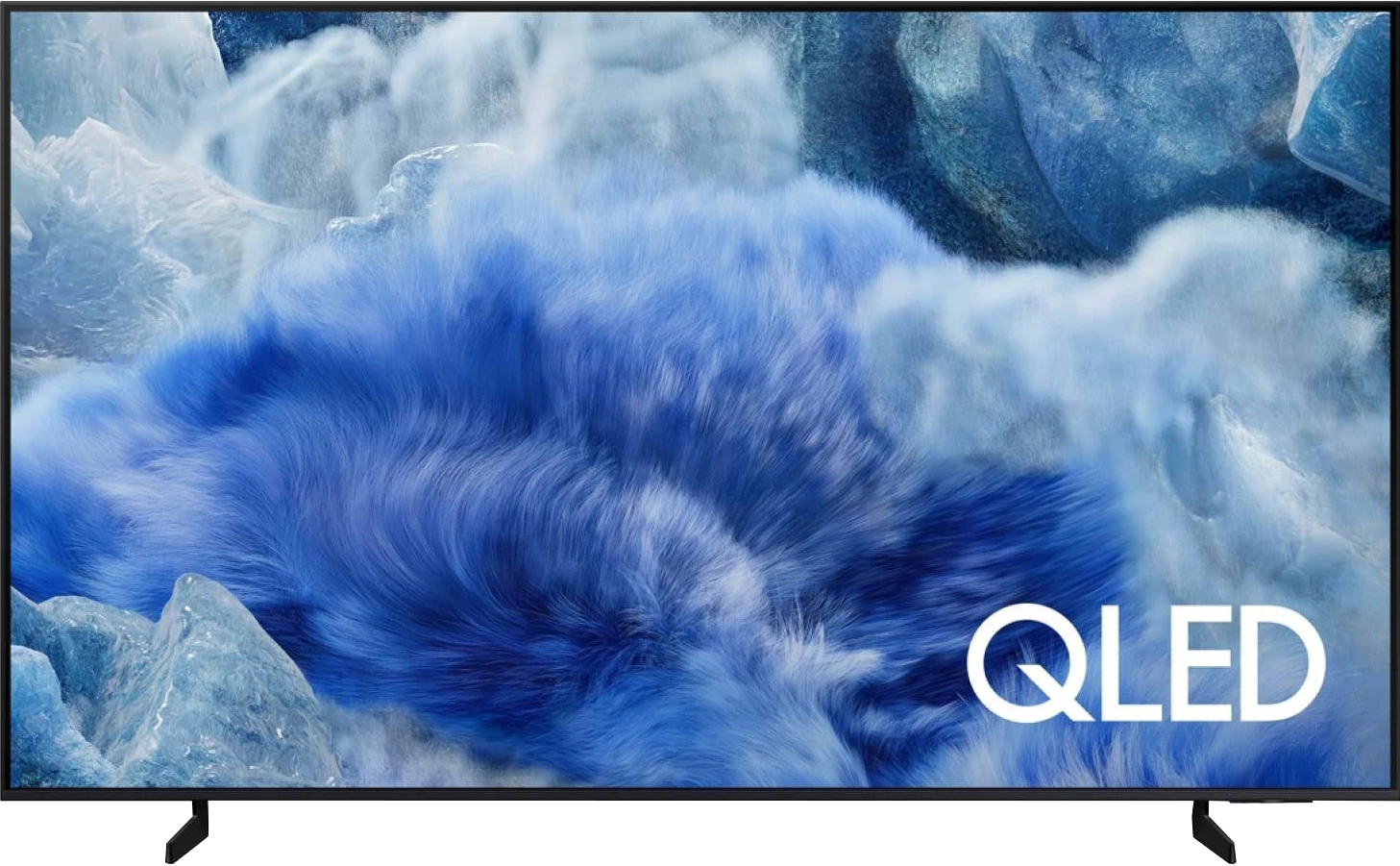
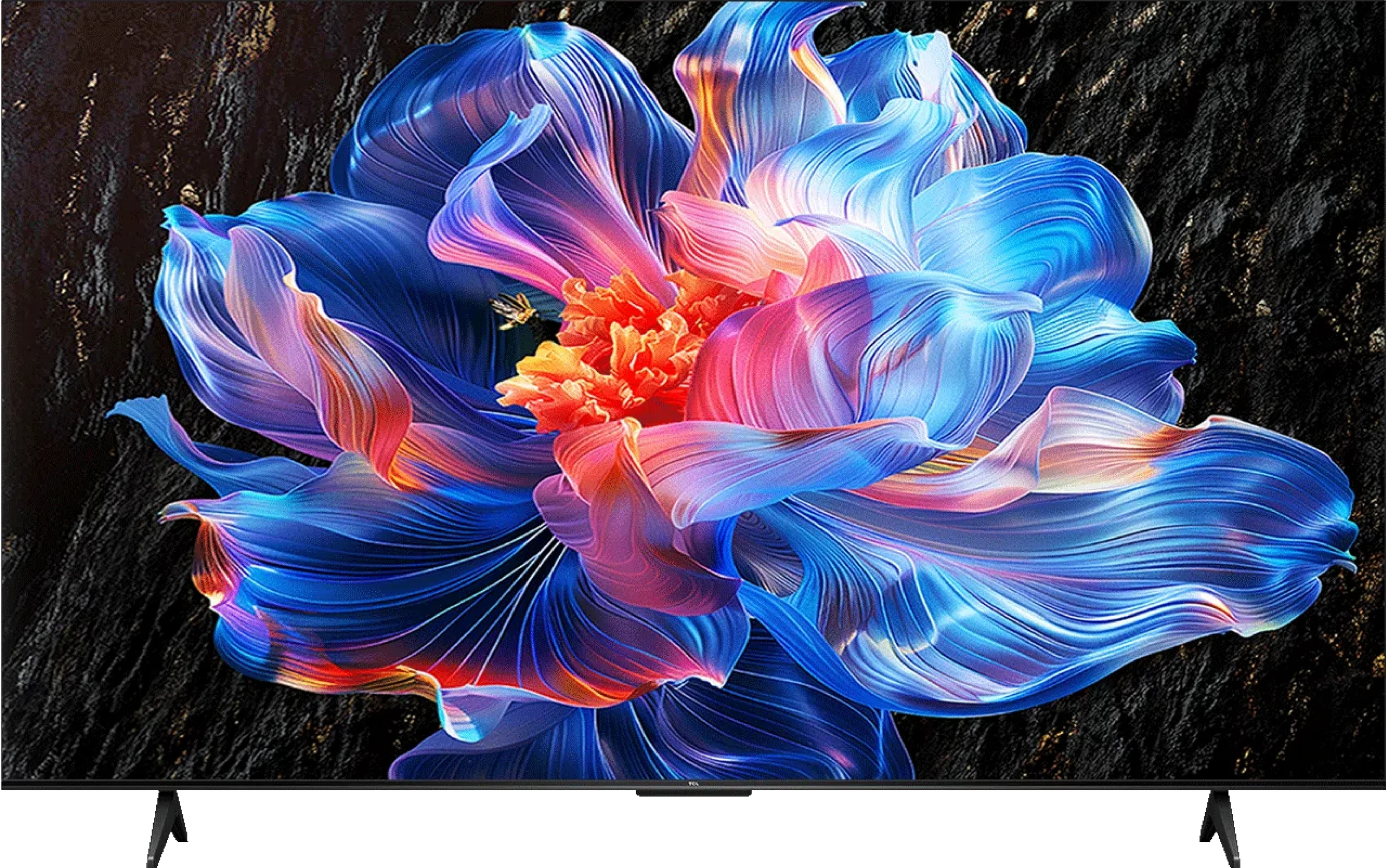
Panel type: LCD VA
Resolution: 3840x2160
System: Tizen
Model year: 2025
Complete the survey to find out the result

Panel type: LCD VA
Resolution: 3840x2160
System: Google TV
Model year: 2025
Complete the survey to find out the result

Overall rating
6.3
5.2
Movies and series in UHD quality
6.3
4.9
Classic TV, YouTube
6.0
5.0
Sports broadcasts (TV and apps)
5.1
3.9
Gaming on console
6.9
6.0
TV as a computer monitor
6.0
4.0
Watching in bright light
5.6
3.6
Utility functions
7.3
7.3
Apps
8.7
9.6
Sound quality
6.0
5.8
Complete the survey to find out what fits your preferences
Advantages
Solid contrast thanks to the VA panel
Pretty good brightness in SDR and HDR (up to about 500 nits)
Satin finish does well with reflections
Tizen operating system – fast, intuitive, with a rich app selection
Solar remote with USB-C charging
Integration with the SmartThings ecosystem
Great input lag
Good font readability when working with a PC, suitable as a text work monitor
Adjustable stand on multiple planes
Attractive price
Advanced GoogleTV system with a large app library
Decent contrast thanks to the VA panel
Quite a good functioning dynamic tone mapping feature (often saves the TV in HDR content)
Low input lag below 15 ms
Presence of ALLM mode and simple Game Bar
Support for Dolby Vision Gaming (Xbox Series S/X)
Support for Dolby Atmos and DTS:X, making it easier to use with a soundbar
Disadvantages
Severely limited features for gamers (no VRR in practice, no HGiG)*,
No USB recording or PiP functionality
Average digital image processing
*We hope that the promises on the promotional brochures will be quickly fulfilled through software updates.
Very low brightness (~200 nits) = no cinematic effects
Narrow colour gamut coverage, especially in HDR content
Poor Dolby Vision implementation
Strong motion blur in dynamic scenes (panel only 60 Hz)
Average upscaling – the image can be artificially sharpened
Unusual subpixel arrangement making font readability difficult when working with PC
Limited viewing angles typical of VA panels
The TV performs poorly in heavily sunlit rooms
Google TV system can be sluggish and doesn't operate as smoothly as in more expensive models
No USB recording feature or Picture-in-Picture mode
Our verdict
The TCL V6C is a television whose appeal lies primarily in three elements: the Google TV system, several features beneficial for gamers, and a very low price. The biggest advantage is indeed Google TV – it provides access to an enormous library of apps, from the most popular streaming services to lesser-known programs, and it allows the use of AirPlay, screen mirroring, and voice search. For many users, this system alone may be a sufficient reason to consider a purchase. Additionally, there are simple yet practical features for gamers, such as ALLM mode, low input lag, and a Game Bar with parameter previews, which make occasional gaming on a console more convenient. The third argument, and perhaps the most important, is the price – it’s hard to find another model with Google TV in this class that offers such wide access to smart features. However, when it comes to picture quality, it’s clear that we are dealing with a significant number of compromises. The V6C is a very dim television. Colours remain dull, and in more demanding scenes, the image can be flat and lacking in detail. The contrast provided by the VA panel can be considered decent, but this comes at the cost of weak viewing angles. Additionally, there is motion blur in dynamic sports scenes, as well as an unnatural upscaling effect that often artificially sharpens details instead of enhancing them. So, who is this model for? The V6C is a television that will work well as a simple device for everyday watching of TV or YouTube, and its greatest strength is its operating system and low price. However, if we’re hoping for budget-friendly cinematic experiences or comfortable gaming in modern titles, this model will quickly reveal its limitations. Therefore, when purchasing it, one must be clear about what they are choosing – it’s a television for simple tasks, not a device that is meant to impress with picture quality.
TV appearance
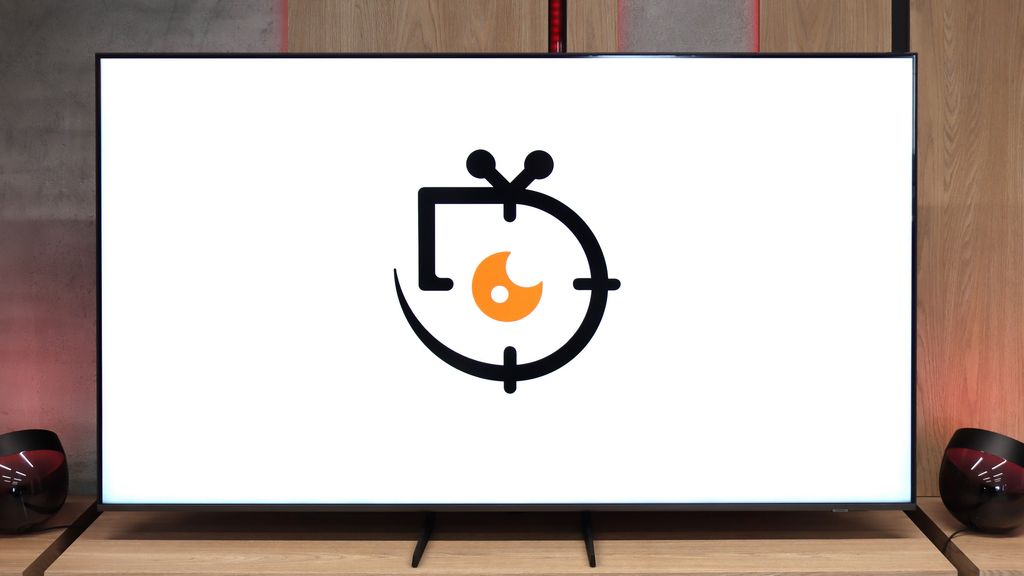
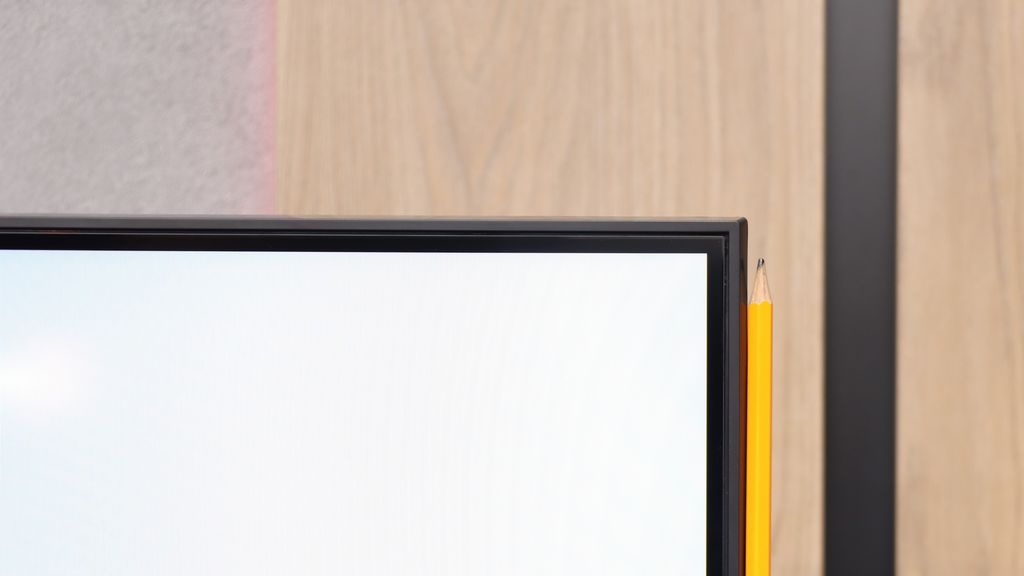
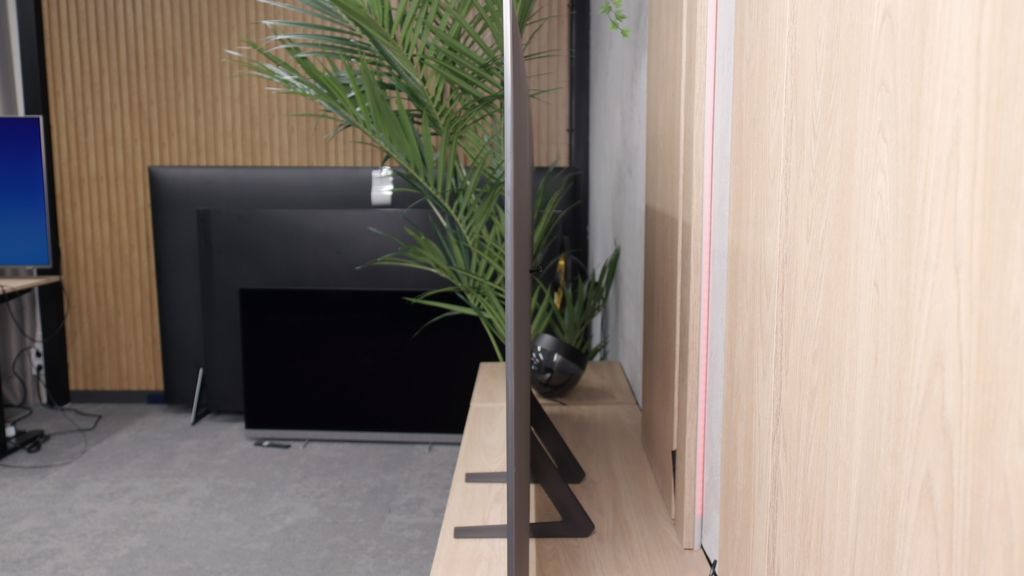
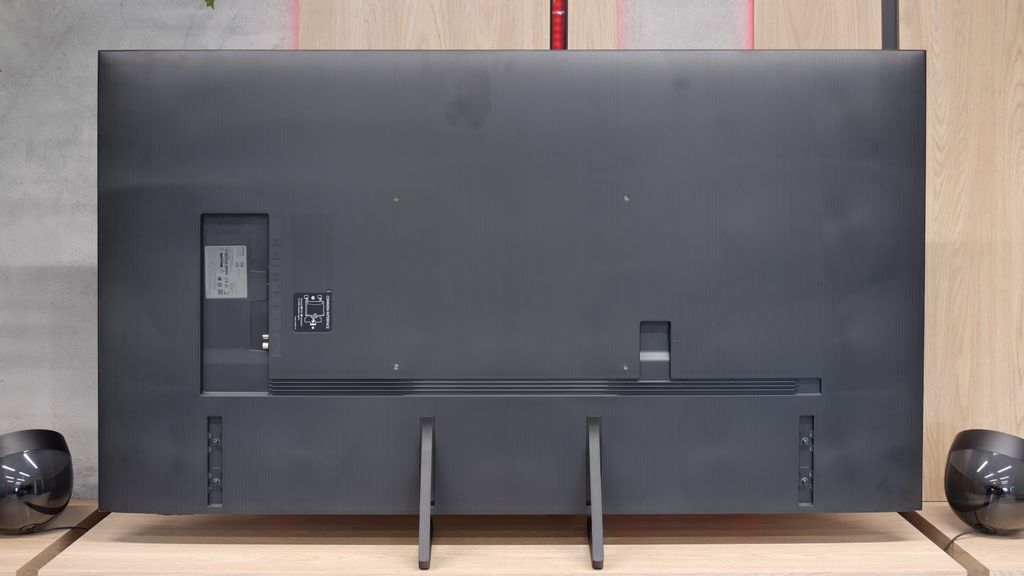
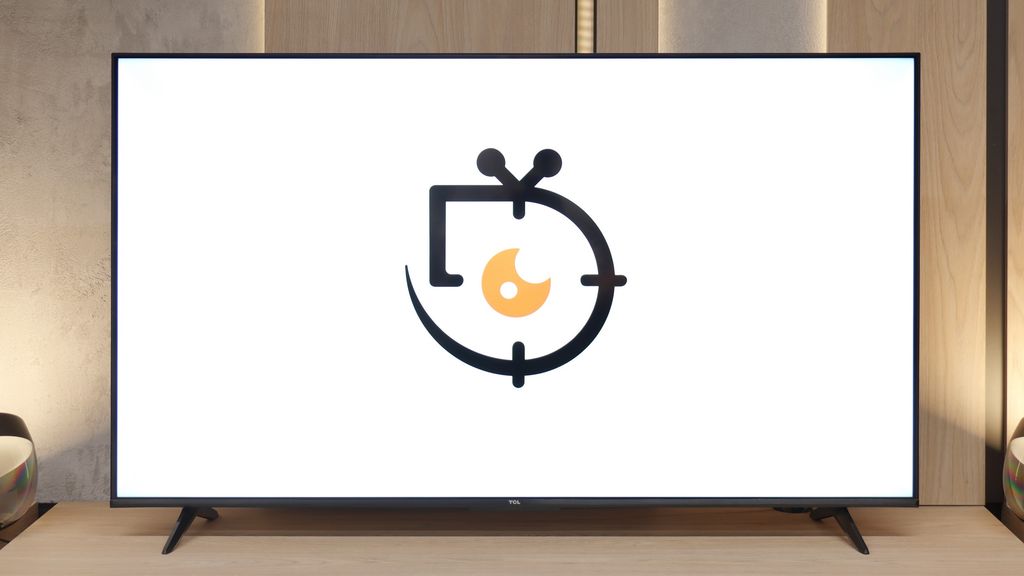
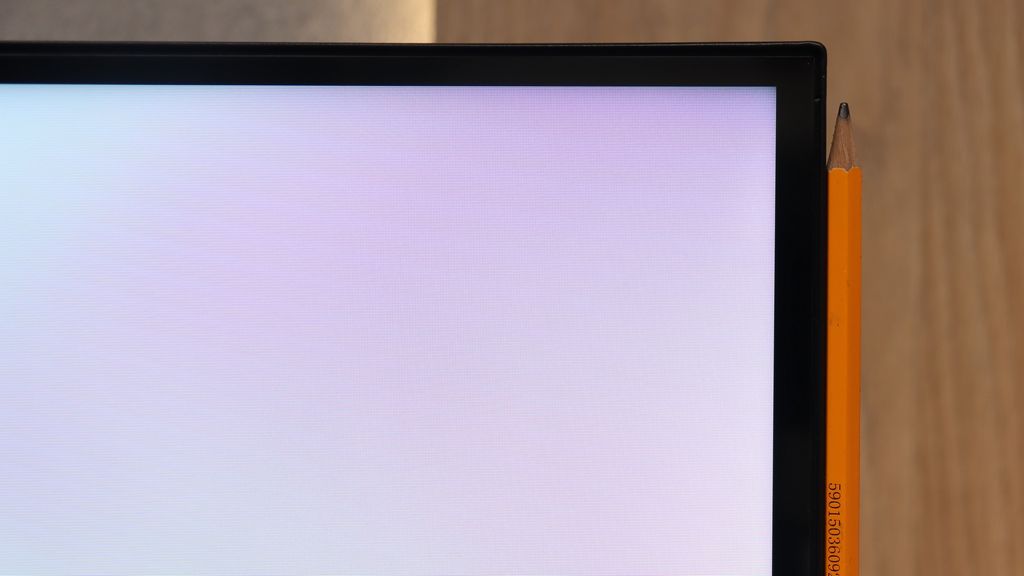
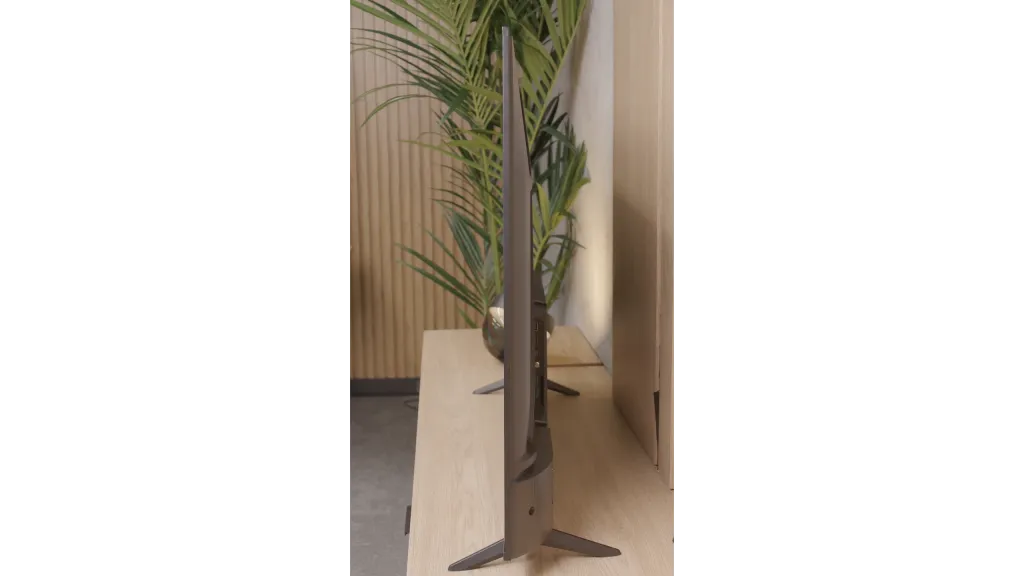
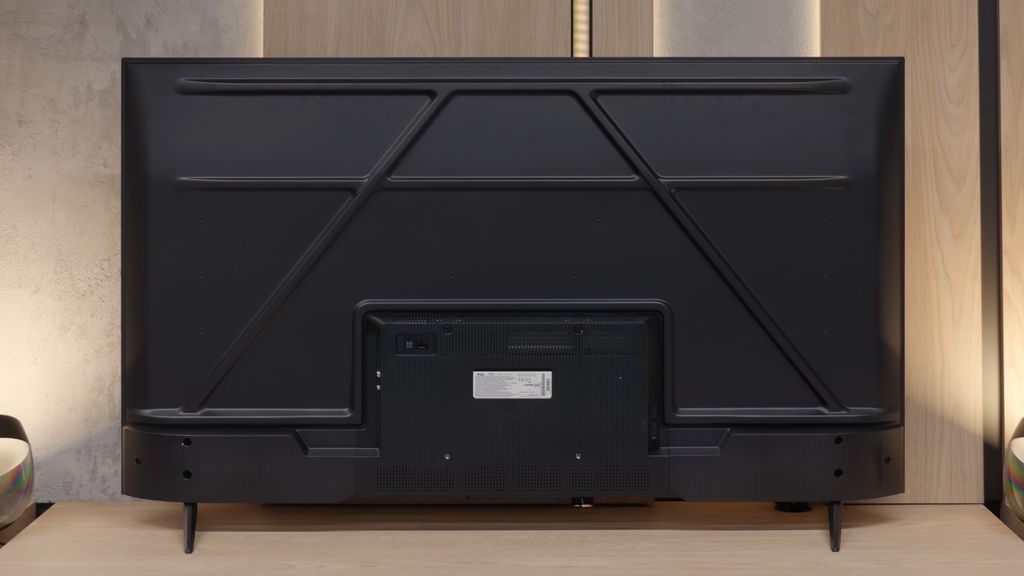
Where to buy
Contrast and black detail
5.5/10
5.2/10
Local dimming function: No
Local dimming function: No
Contrast:

Result
5,200:1

Result
4,650:1

Result
3,650:1

Result
4,100:1

Result
4,150:1

Result
4,450:1

Result
4,900:1

Result
3,150:1

Result
4,250:1

Result
2,550:1
Halo effect and black detail visibility:


Samsung Q8F uses a VA LCD panel, which immediately puts it in a good position regarding contrast. By nature, such panels offer deeper blacks than IPS panels, and you can actually see this effect here. On test patterns, the contrast ranged from about 4000:1 to even 6000:1, which practically results in a surprisingly engaging image, especially in a slightly dimmed living room. Of course, this is not the level of LCD screens with local dimming, let alone OLED — sometimes the blacks can verge on a shade of navy, and the overall image can appear flat. However, Samsung employs a simple trick: so-called global dimming, which dims the entire screen when there are many dark sections. The effect can be impressive, but it comes at the cost of losing some details, which may not appeal to everyone. Nevertheless, the Q8F still performs significantly better than televisions with IPS panels, offering solid contrast and blacks that can immerse you in the cinematic atmosphere.
The TCK V6C uses a VA matrix, which is a solution that is considered quite a sensible choice in budget televisions. This type of panel offers high contrast and can provide pleasant experiences, especially during evening movie sessions. Of course, in this price range, it’s hard to expect local dimming – that technology is simply not present here. The effect is that blacks won’t be as deep and inky as in more expensive models, and at times they might resemble more of a shade of navy. Fortunately, this can be easily worked around – just turn on a soft light behind the television or place a small lamp in the corner of the room, and the eye will "trick" itself, making the blacks appear much better. Given the equipment in this range, the contrast can therefore be regarded as decent and sufficient for everyday viewing.
HDR effect quality
5.2/10
3.2/10
Luminance measurements in HDR:

Result
473 nit

Result
417 nit

Result
457 nit

Result
210 nit

Result
471 nit

Result
149 nit

Result
163 nit

Result
193 nit

Result
172 nit

Result
196 nit
Scene from the movie “Pan” (about 2800 nits)


Scene from the movie “Billy Lynn” (about 1100 nits)


Static HDR10


Dynamic: HDR10+
Dynamic: Dolby Vision


HDR luminance chart:
TCL V6C
HDR luminance
Samsung Q8F
HDR luminance
In terms of brightness, the Samsung Q8F performs surprisingly well for a TV without local dimming. It measures up to 500 nits, which in practice means that most movie and series scenes look pleasant, and it cannot be faulted for lacking the "HDR effect." In films like Life of Pi or The Meg, the screen can burst with bright light, delivering a level of lighting effect that is satisfying. It struggles more in challenging moments—such as dark scenes with single bright points. The global dimming used causes the TV to darken the image to maintain deep blacks, but at the expense of detail brightness. This is clearly visible in the scene from Sicario 2, where the brightness of the helicopter lights dropped to around 200 nits. This is a deliberate design choice that gives the impression of deeper blacks but takes some shine away from individual elements, and one should simply keep that in mind. Regarding colour reproduction, the Q8F uses quantum dot technology, which expands the colour gamut. A coverage of the DCI-P3 palette at 91% can be considered a decent result, although it is not a record-breaking figure compared to other QLEDs.
When it comes to HDR, the TCK V6C clearly shows that it is not its strong suit. A peak brightness of around 200 nits makes it difficult to talk about true HDR effects – the picture simply remains too dark to bring out details in bright scenes or convey the appropriate dynamics. Although the television formally supports many HDR formats, it is not practically equipped for such demanding content. The lack of additional layers that enhance colors, such as QLED or PFS LED, further limits the appeal of the image – in more spectacular productions, the colours may seem washed out compared to more expensive models. Therefore, the V6C will primarily serve as a television for everyday viewing, YouTube, or SDR content, rather than as equipment for high-quality cinematic experiences.
Factory color reproduction
4.6/10
4.8/10


Factory Mode
After calibration
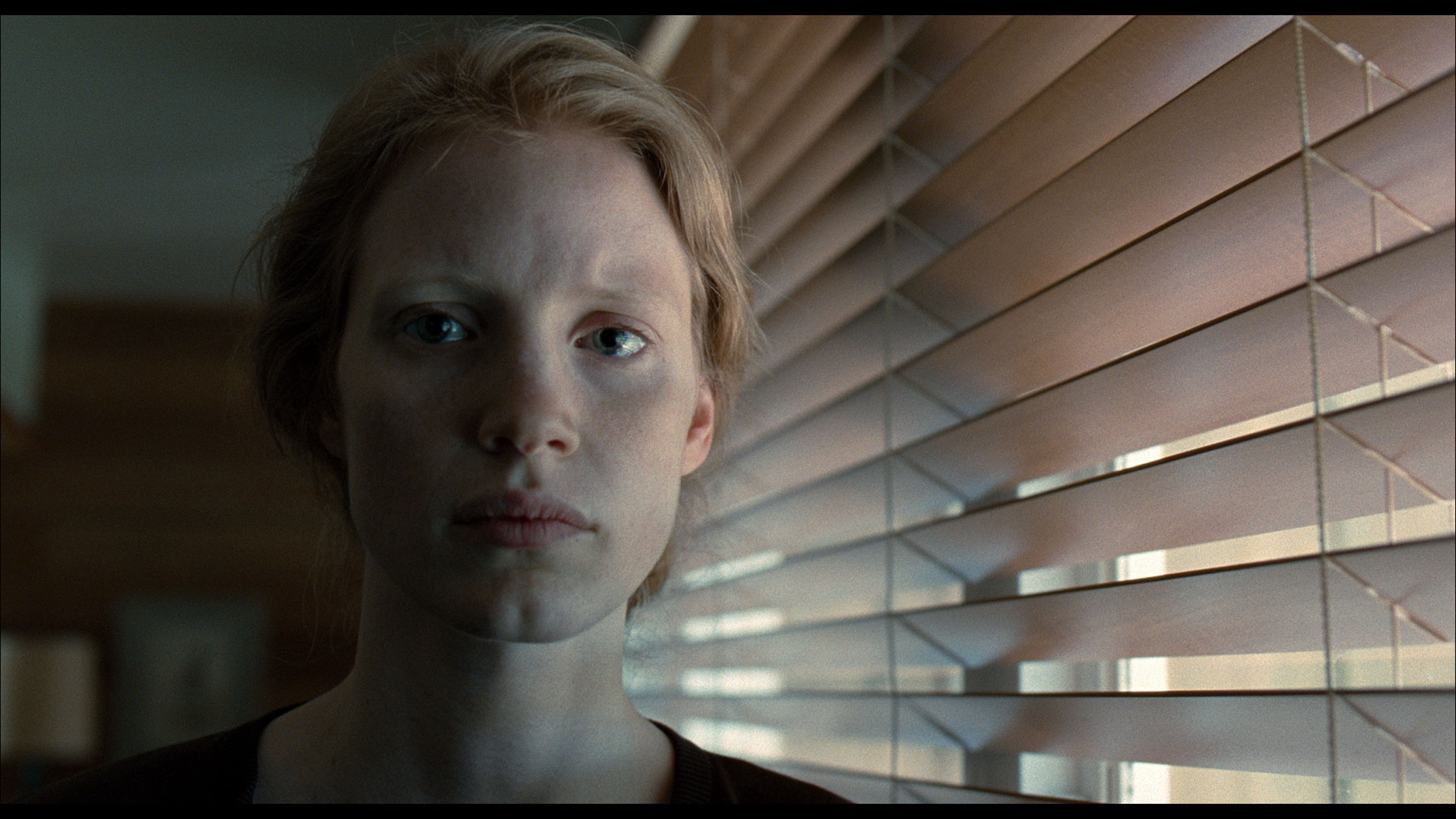

Factory Mode
After calibration
We decided to check out the Filmmaker mode because right out of the box it gave us the best picture. However, that doesn't mean it was perfect. The white balance had too much of a blue and red tint, causing the whites to lean towards a slight purple-pink hue. Such imbalance affected the visibility of virtually all colours, which is clearly seen in the comparison photo below. The brightness characteristics in SDR content were quite well calibrated, although in HDR materials we noticed that the TV didn't always handle its global dimming well — at times the screen was too dim, while at other times it could suddenly brighten up. Fortunately, issues related to colours can be effectively corrected with calibration tools, so we decided to get to work.
We started colour reproduction tests with the Filmmaker mode, which in theory should be the best choice straight out of the box. It certainly performs better than the Eco or Dynamic modes, which heavily interfere with the image and spoil its natural character. As you can see in the graphs, the factory tuning of the V6C is not ideal, although it's not a disaster either. The biggest issue turned out to be a lack of red – the TV clearly "cools" the image, which is especially noticeable on human faces, giving a "zombie skin" effect. This particular issue was the most bothersome during everyday viewing. Looking at the colour palette in HDR content, the shortcomings in red are also noticeable, and their source is the relatively narrow coverage of the colour space. Of course, every TV can be calibrated, so we decided to check how the V6C would perform after such an adjustment.
Color reproduction after calibration
7.8/10
5.2/10




After calibration, we managed to correct the white balance to almost perfection. Older SDR content looks fantastic — most errors are within a value of 2, which is definitely below the threshold of human perceptibility. In HDR, we also brought the white balance to an acceptable level, but a different problem arises here. So why are there still relatively large errors in colour reproduction? This is mainly due to the limited colour palette and the way the television manages brightness. The global dimming technique used does not give the user control in the settings, so analysing the EOTF curve in HDR films, it's clear that the Q8F can modify luminance on its own. This can be seen as a limitation, but still, the image after calibration is much more enjoyable to watch than in the factory version.
My dear friends – we haven't faced such a difficult "calibration battle" in years. The V6C turned out to be one of the most stubborn TVs we've dealt with in the office. The calibration trials alone took us several hours of work and required a lot of patience. We finally managed to slightly warm up the skin tones, which made faces stop looking like they were pulled straight out of a horror film, a common issue with the factory settings. Unfortunately, that wasn't the end of it – the TV reacted to our adjustments in white balance in a completely unpredictable manner. Where we expected stability in the image in a certain area, new errors appeared, and Color Checker measurements showed deviations that couldn't be rationally explained. It's hard to say whether the fault lay with the software or the design itself, but one thing is certain – the V6C put up exceptionally strong resistance. Ultimately, the calibration brought improvement, especially in SDR content, where the image became more pleasing and natural. However, it must be clearly stated that the design limitations remain. The TV still flattens the image in HDR materials and has noticeable deficiencies in colour reproduction. This is equipment more suited for everyday TV watching or SDR content rather than for cinematic experiences in the highest quality.
Smoothness of tonal transitions
9/10
7/10












The fluidity of tonal transitions in the Q8F performs really well. The television beautifully blends colours, both in bright segments of the sky and in darker scenes, where visible "steps" in colour can easily occur. Admittedly, sporadic errors do happen, but you have to look closely to catch them. In practice, while watching movies or series, the picture looks cohesive and doesn’t get distracted by any artefacts. Therefore, the rating in this category had to be high. 😉
When it comes to the fluidity of tonal transitions, it doesn’t look too bad during everyday viewing. In most scenes, the image appears smooth, and the colours blend without noticeable disruptions. So you can comfortably watch movies or series without worrying about glaring artefacts. The problem only starts in more extreme moments – in very bright or exceptionally dark scenes, the V6C shows its limitations. You can then see slight "stepping" of colours, meaning a lack of perfectly smooth transitions. Fortunately, these are rather sporadic situations.
Image scaling and smoothness of tonal transitions
5/10
5/10
Smooth transition function


Image without overscan on the SD signal


Let's see how the Q8F handles older content, which often has poor quality. Starting with the positives: the upscaling works really well. The TV performs nicely with both classic television and materials from YouTube, not giving the impression that we're dealing with something completely unattractive. It struggles more with content in very low resolutions, such as 576p — the image can be cropped, and unfortunately, the overscan phenomenon cannot be disabled. Moreover, the digital processing does not look great either. The noise reduction feature, instead of removing unwanted artefacts, smooths out almost everything: film grain (which many viewers desire) disappears along with the texture of the image, and actors' faces start to resemble characters from cheap Turkish soap operas. It's hard to consider this option useful — it's best left completely off. Perhaps Samsung will refine the function’s performance in updates, but for now, it’s difficult to view it as anything other than an unnecessary addition.
When it comes to upscaling, the V6C doesn't bring anything groundbreaking to the table. Lower quality content is heavily sharpened, making the image look quite unnatural, at times almost artificial. This can be somewhat alleviated by reducing the sharpness level in the settings, but the effect isn't spectacular. The image still falls short of perfection. The digital processing itself performs better. The function responsible for smoothing tonal transitions works quite effectively, especially at the medium setting, where the image truly appears smoother. Unfortunately, its operation is rather aggressive – it heavily interferes with the overall scene, causing actors in the foreground to start looking like characters from super smooth soap operas. Therefore, we would not recommend using this option if a natural viewing experience is important to us.
Blur and motion smoothness
4.5/10
3/10
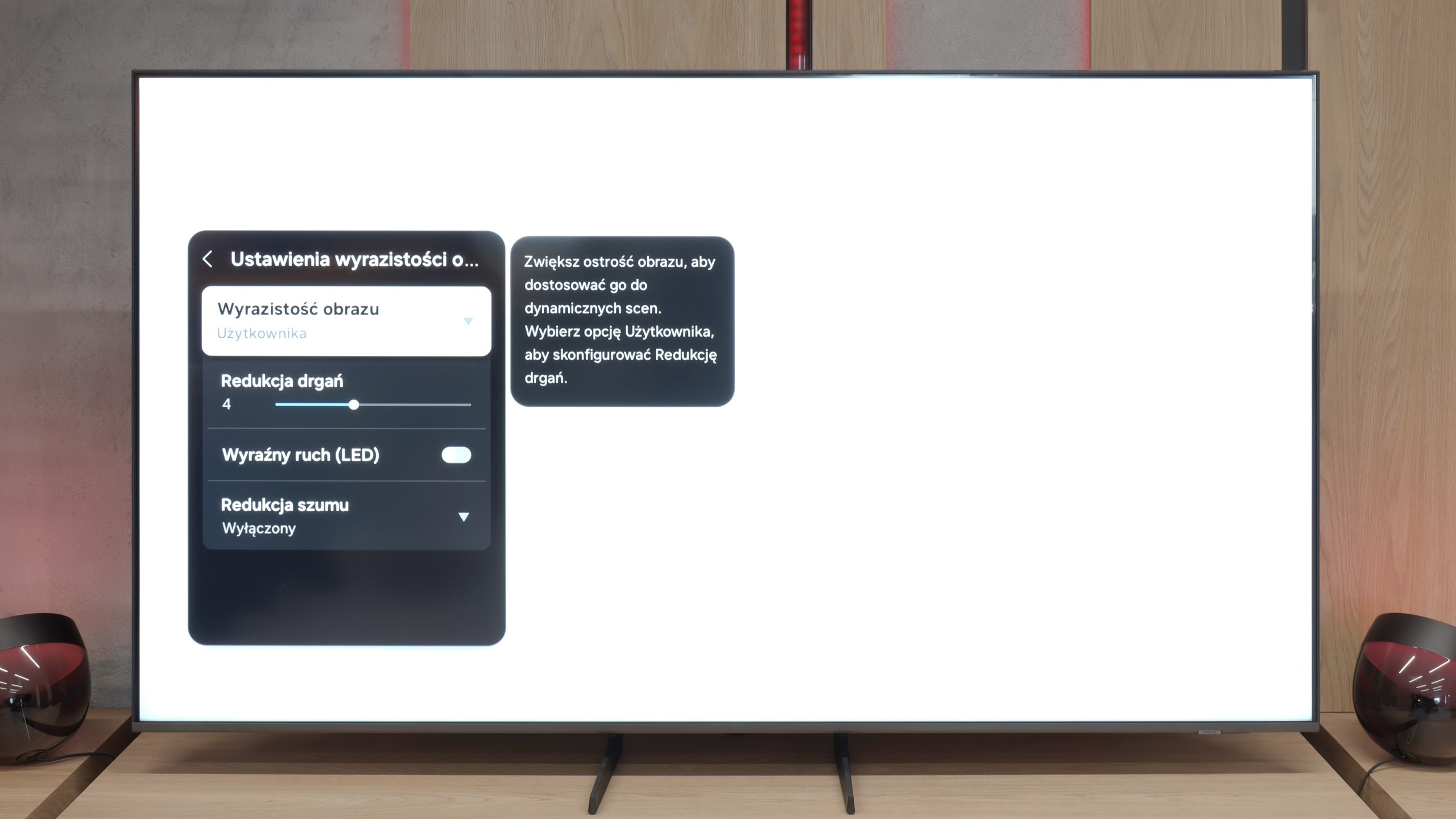
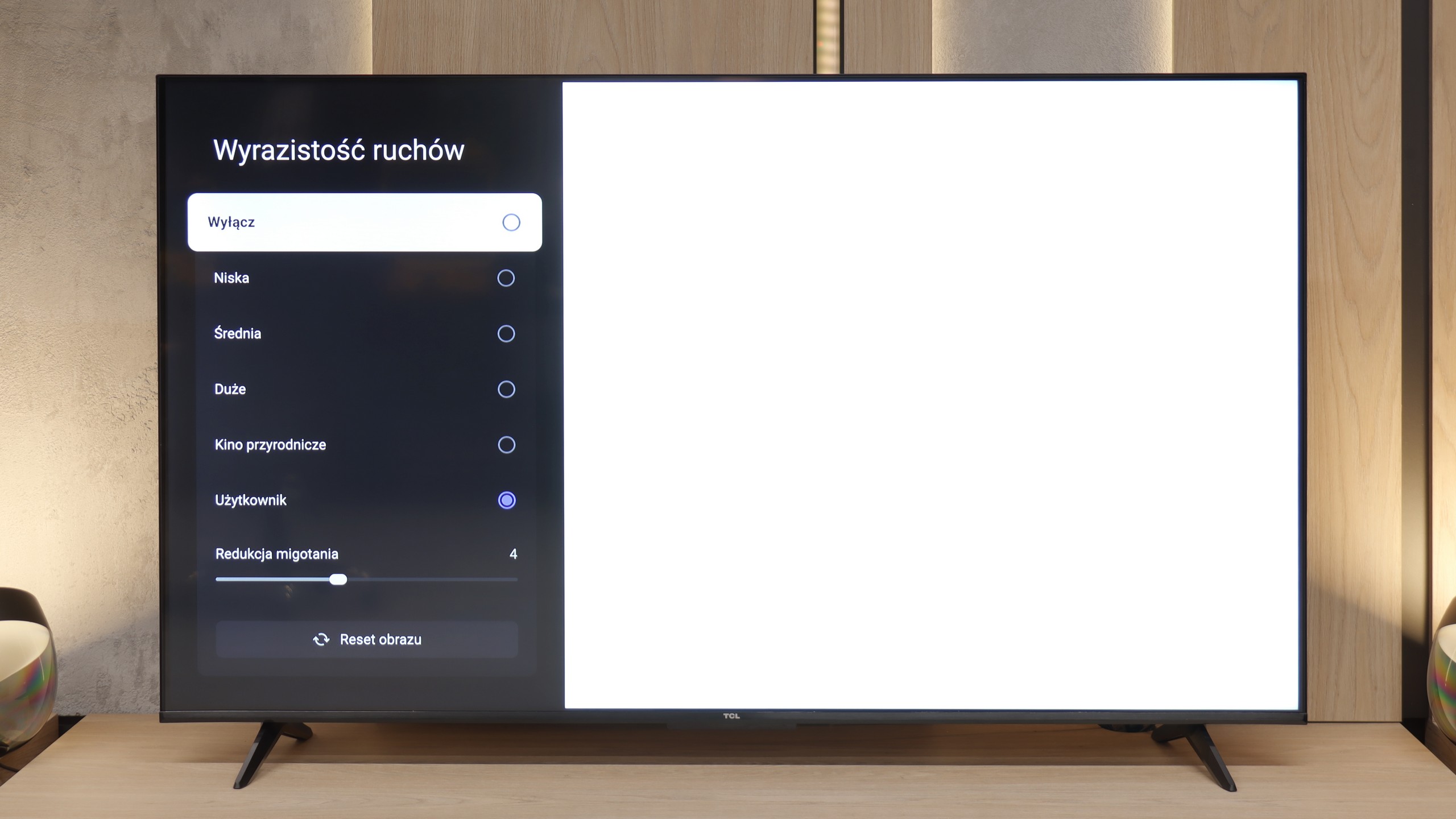
Blur (native resolution, maximum refresh rate):






Blur (BFI function enabled):



Due to the applied 60 Hz panel, it's hard to call the Q8F a television made for gaming or watching sports. The panel isn't particularly fast, making motion blur clearly visible. If you were expecting a spectacular, almost 'stadium-like' experience during broadcasts, you might feel a bit disappointed. Fortunately, for movies and series, Samsung hasn't given up on the motion smoothing function. It's nothing more than a smoother that allows for improved fluidity of productions recorded at 24 or 30 frames per second. This way, you can decide for yourself whether you prefer a more fluid, 'television-like' image or to retain the cinematic character. It all depends on the viewer's preferences, and the ability to adjust this parameter is undoubtedly a plus.
Smoothing and motion fluidity are areas where the V6C quickly reveals its limitations. It's a 60 Hz TV, so it was hard to expect miracles here. In dynamic sports scenes, the image performs rather mediocrely. This is most noticeable in darker scenes, where distinct trails and blurred "halos" follow moving objects, which can be quite distracting. This is definitely a weaker point of this model. Fortunately, there is also a small plus. The V6C is equipped with a motion smoother that works while watching movies. Thanks to it, productions filmed at 24 frames per second, which is practically all cinema titles and series, can look smoother than they were actually recorded. Importantly, the intensity of the effect can be adjusted to personal preferences – from slight smoothing to the full "soap opera effect."
Console compatibility and gaming features
3.7/10
4/10
- ALLM
- VRR
- VRR range
- Dolby Vision Game Mode
- Correct implementation of HGIG
- 1080p@120Hz
- 1440p@120Hz
- 4K@120Hz
- Game bar
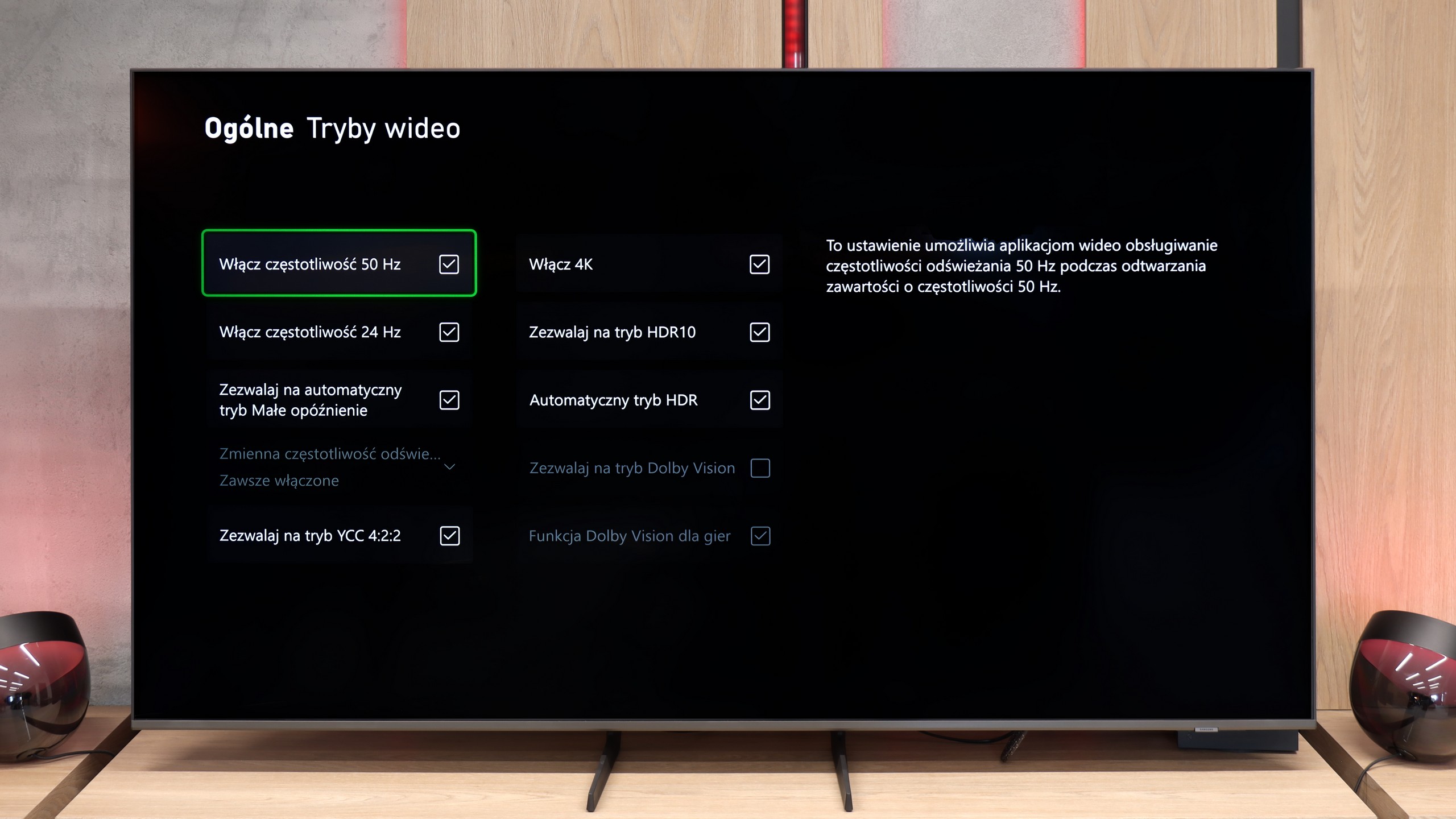
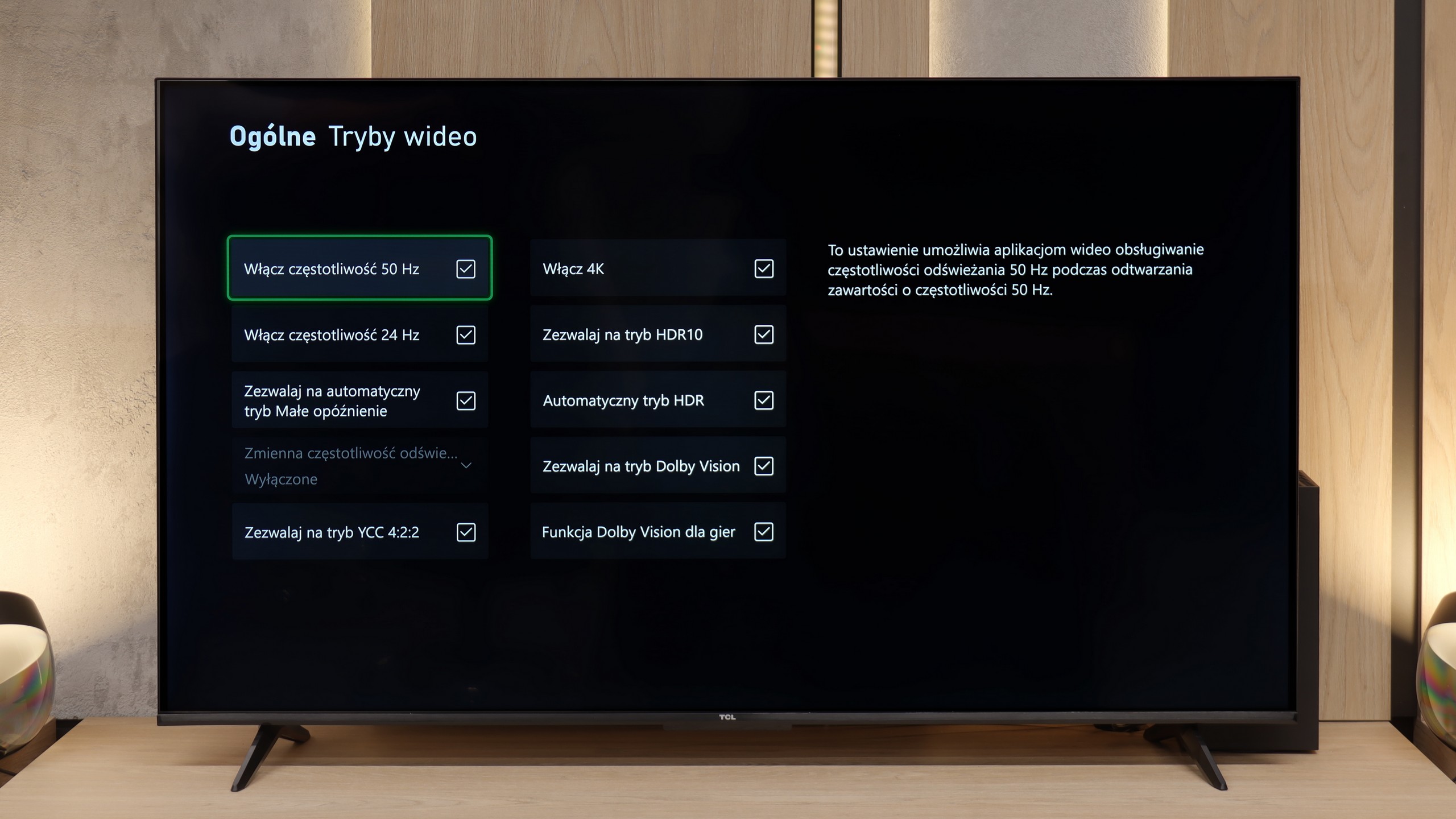
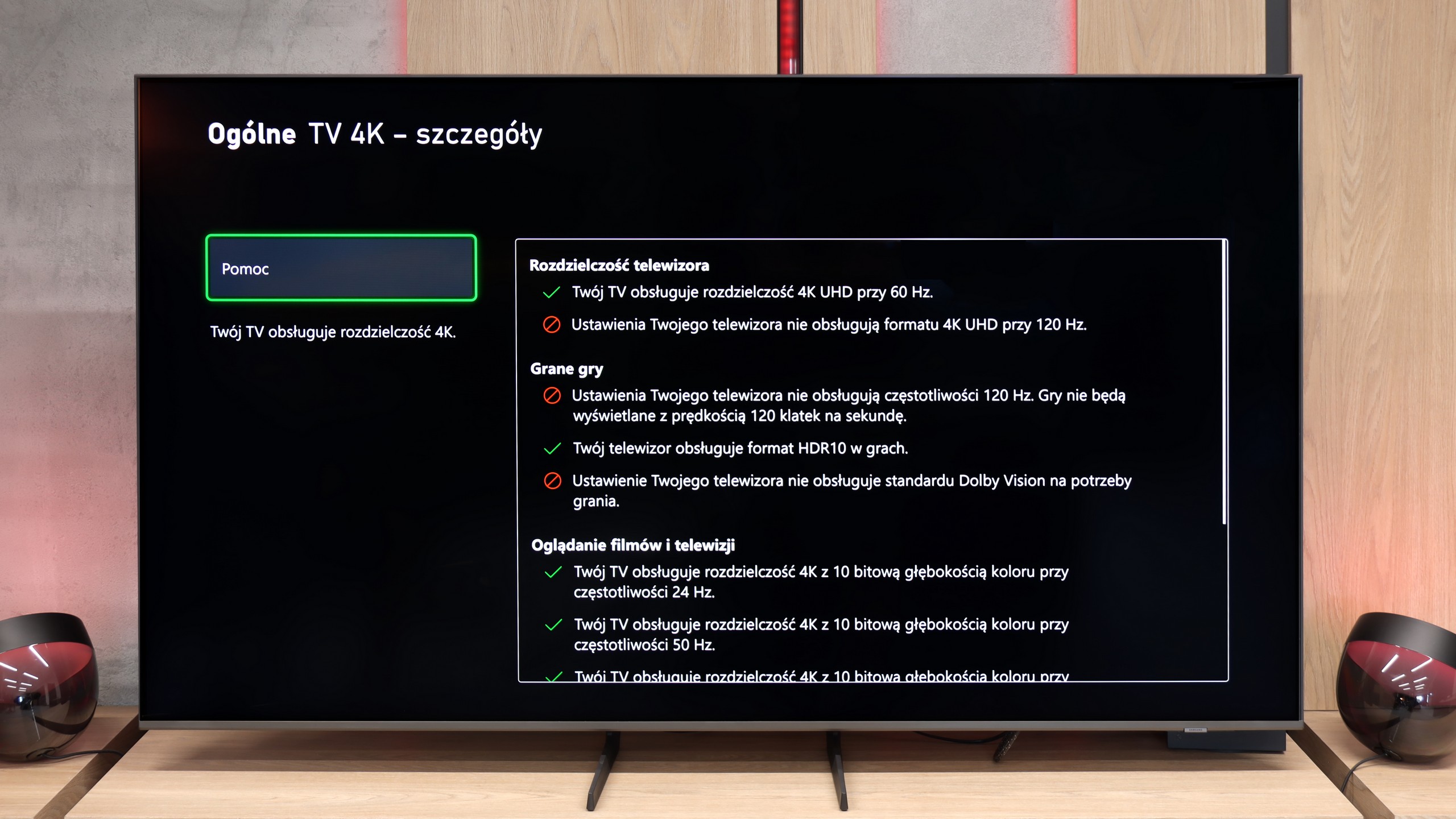
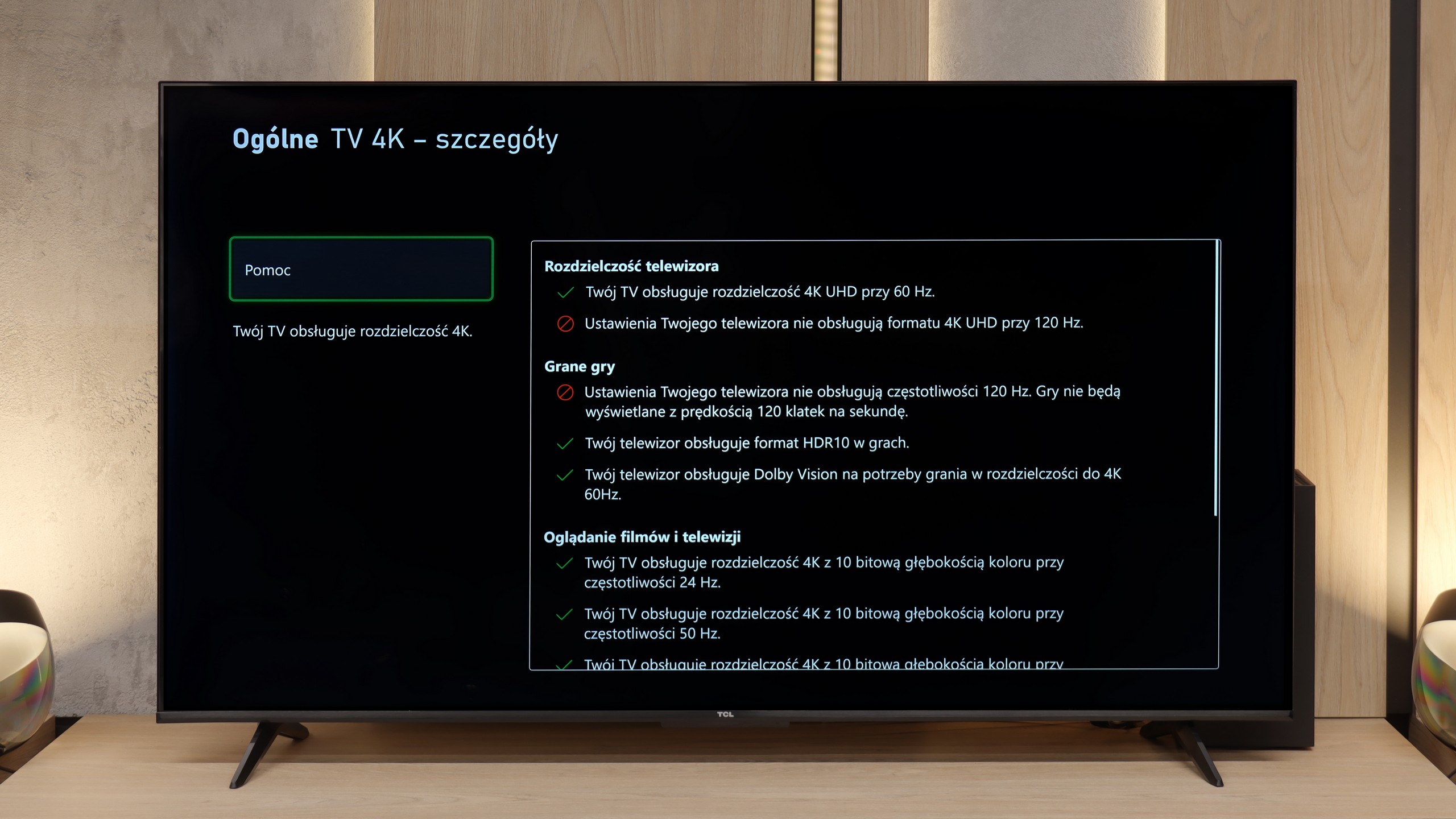
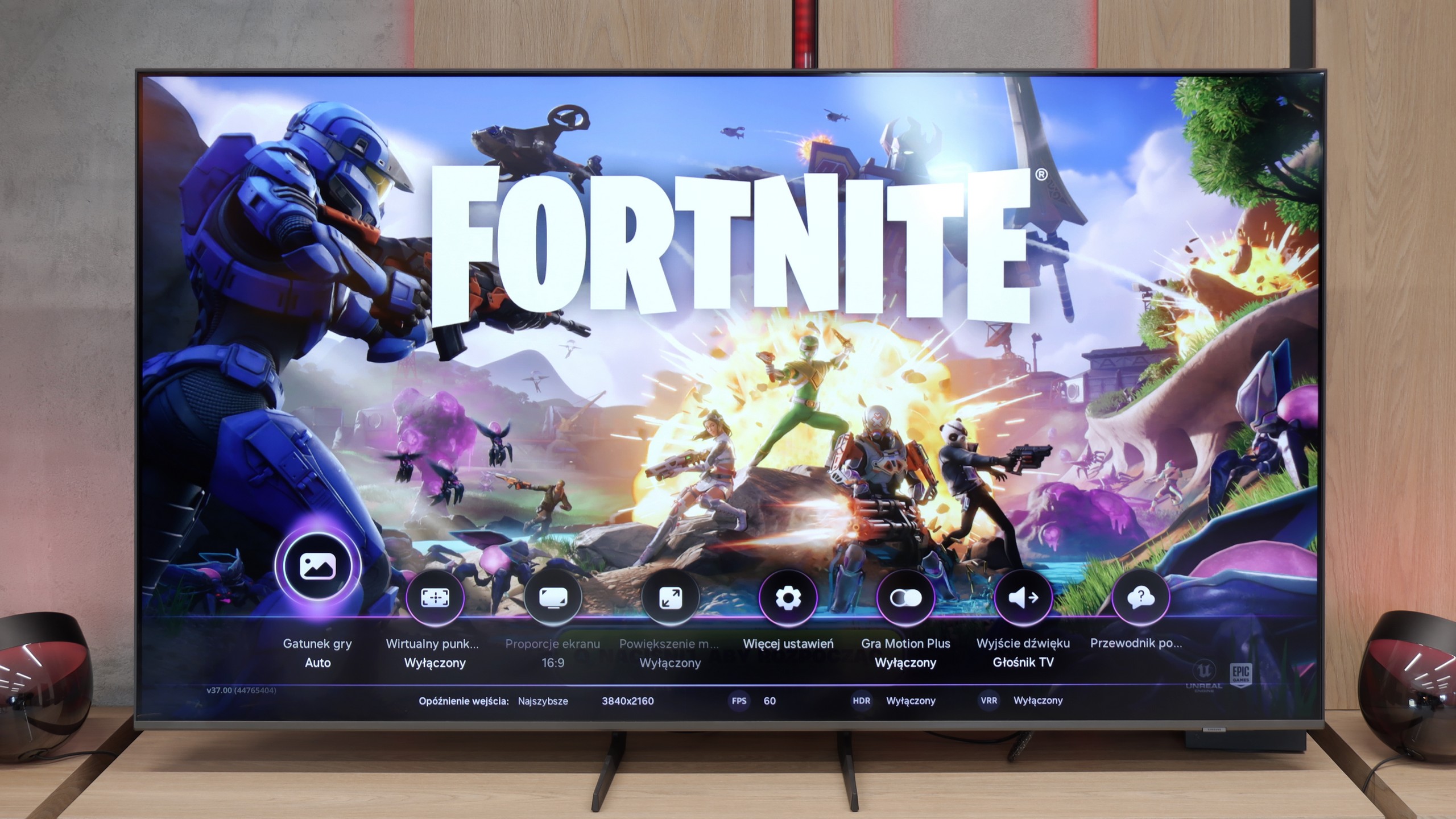
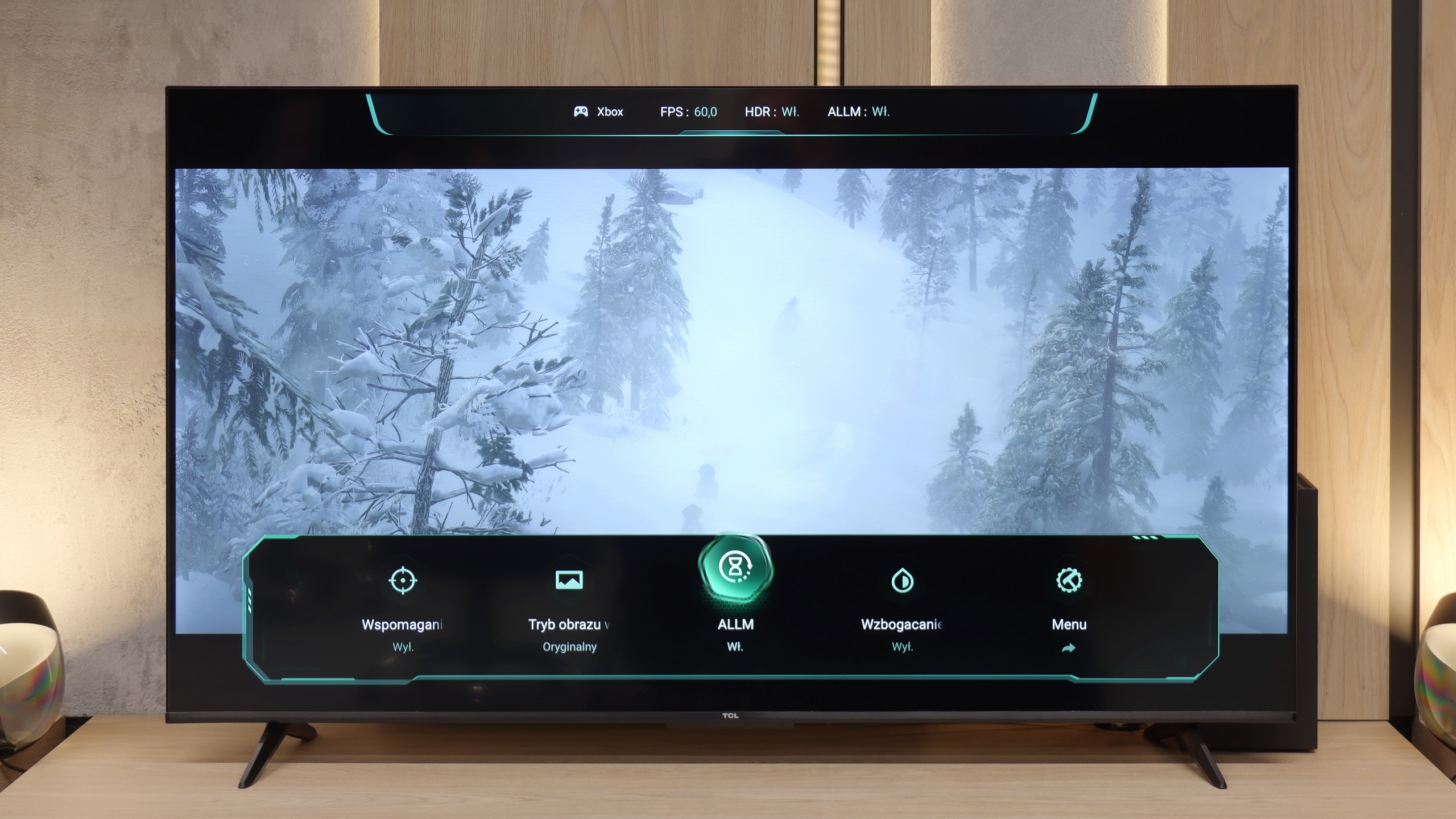
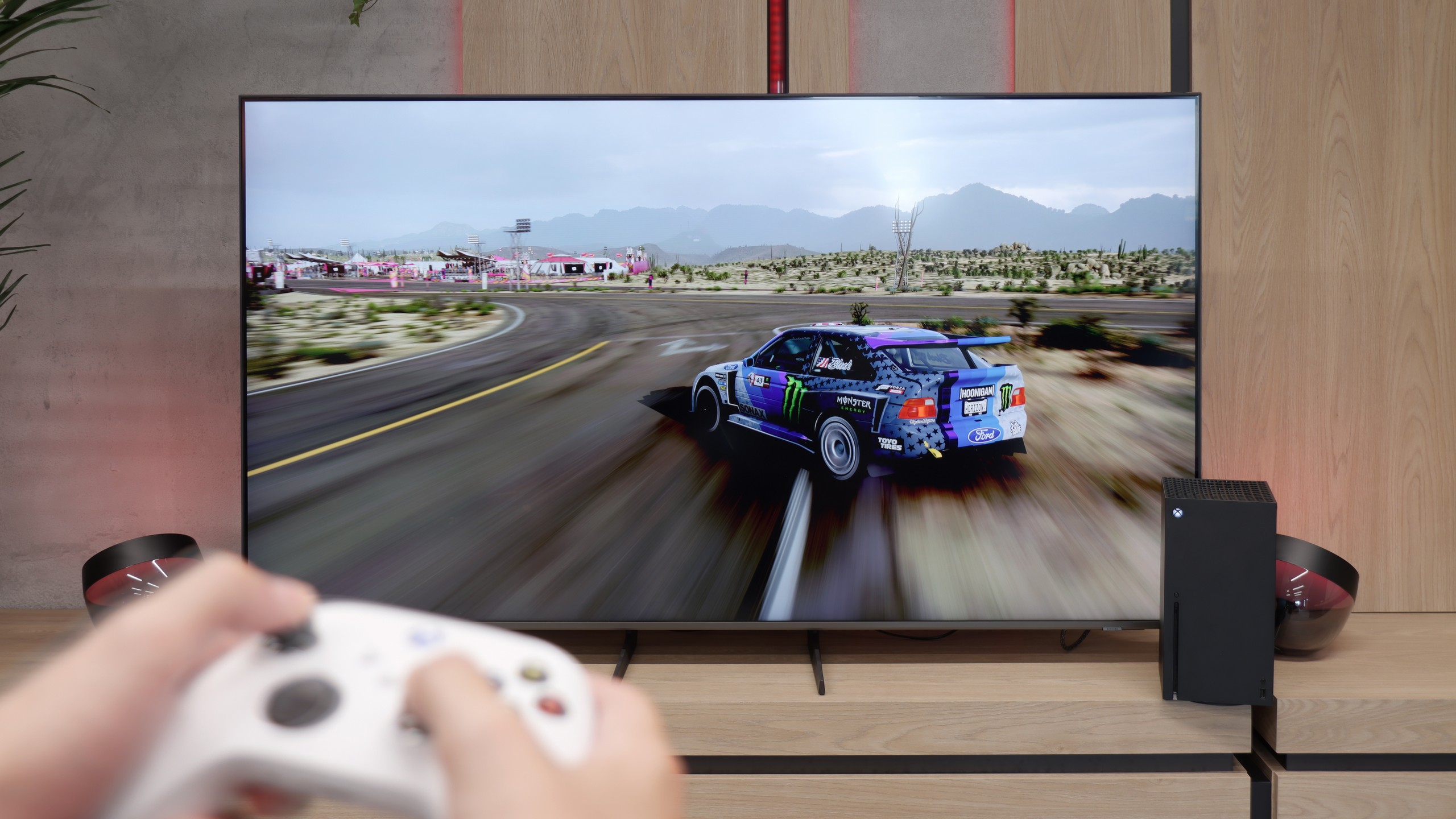
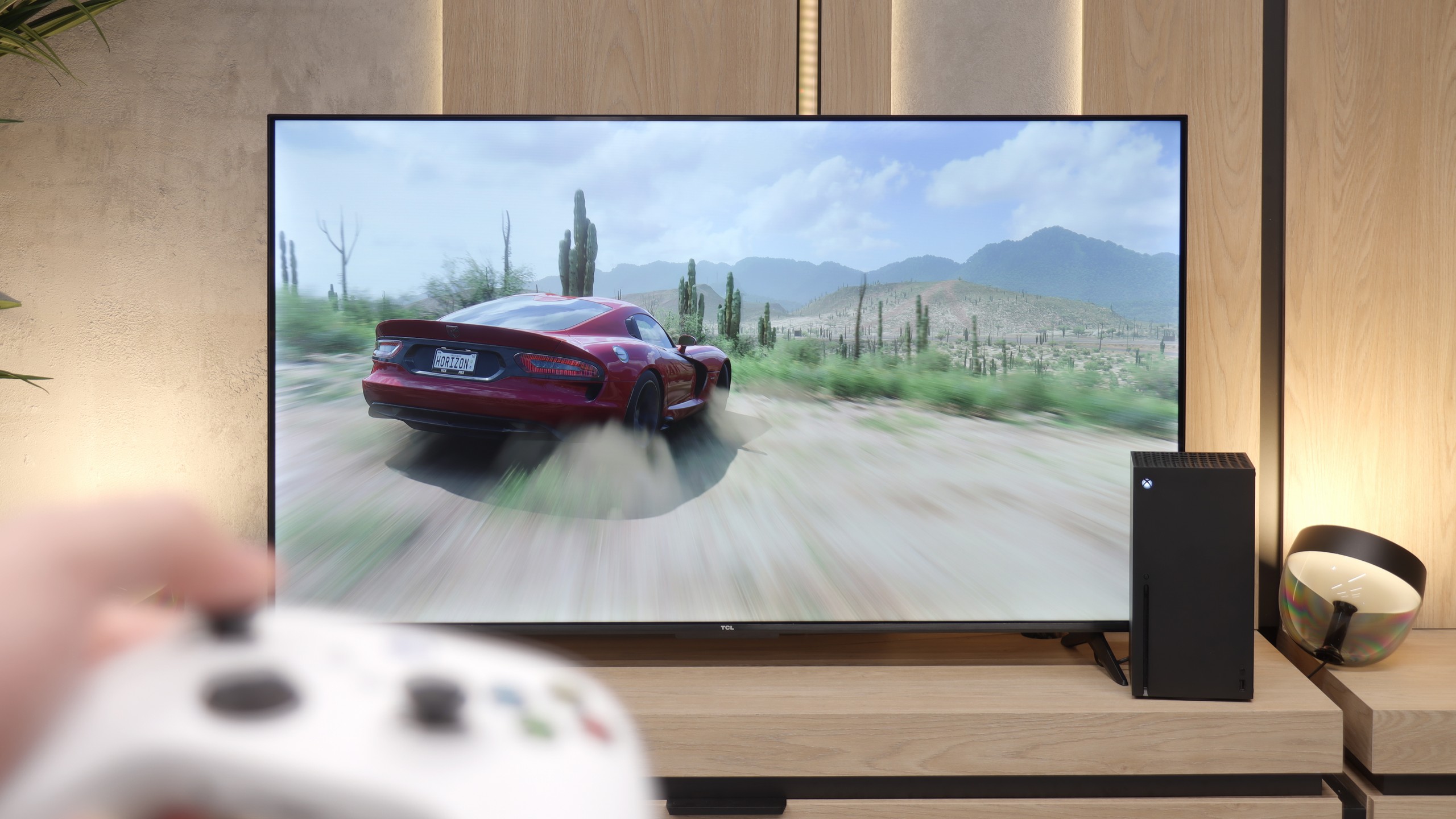
It's not entirely clear what Samsung has messed up this year with its TVs, but the Q8F isn't free from all the confusion with updates and shortcomings. While its older cousin, the Q67D, could still be recommended with a clear conscience to casual gamers, it's hard to find a reason to do so here. Aside from the automatic game mode and the attractively designed Game Bar, we get practically nothing that could appeal to gamers. The lack of proper HGiG implementation is a major issue, especially since the feature simply disappeared after the 1126 update. The situation with VRR is even worse. Even though it appears in the manufacturer's brochures and shows up in the Game Bar, we couldn't get it to work. The Xbox Series X console wouldn't allow it to be activated at all, and the option remained greyed out and inactive. It's difficult to praise such a TV even to casual gamers, which is a shame because Samsung has had a strong selling point in the gaming segment for years.
Even though the V6C is not a TV designed with avid gamers in mind, TCL has included a few features that may appeal to more casual users. You'll not find a 120 Hz panel or HDMI 2.1 ports here, but there is an ALLM mode that automatically switches the TV into low latency mode. There's also a quite practical Game Bar – a simple panel allowing the preview of basic parameters, changing the picture mode, or even enabling a virtual crosshair on the screen. Another interesting feature is the support for Dolby Vision Gaming, intended for Xbox Series S/X consoles – a nice addition, although in practice it doesn’t offer as much as in more expensive models. However, the biggest issue remains the HDR configuration. The HGiG function, responsible for adjusting the brightness and contrast of games to the capabilities of the panel, doesn't respond as we would expect – the picture can be overly dark or too flattened. As a result, a better solution turns out to be simply playing in SDR mode, where the V6C operates steadily and doesn’t try to pretend to be an HDR TV.
Input lag
9.9/10
10/10
SDR
HDR
Dolby Vision
Fortunately, when it comes to gaming, Samsung didn't try to "improve" anything and the input lag remained at an excellent level. Results hovering around 10–15 ms mean that the delays are practically unnoticeable. The controls are instant, and the responses from the console or computer appear on the screen without any noticeable delay. In this regard, the Q8F performs exceptionally well and it's hard to fault it.
The input lag measurement shows values below 15 ms, which is a level that is practically difficult to perceive with the naked eye. Even in dynamic games, the action remains responsive, and the controls are smooth. This is a result that can confidently be considered very good and sufficiently adequate for most players, even if the V6C is not strictly gaming hardware.
Compatibility with PC
6/10
4/10
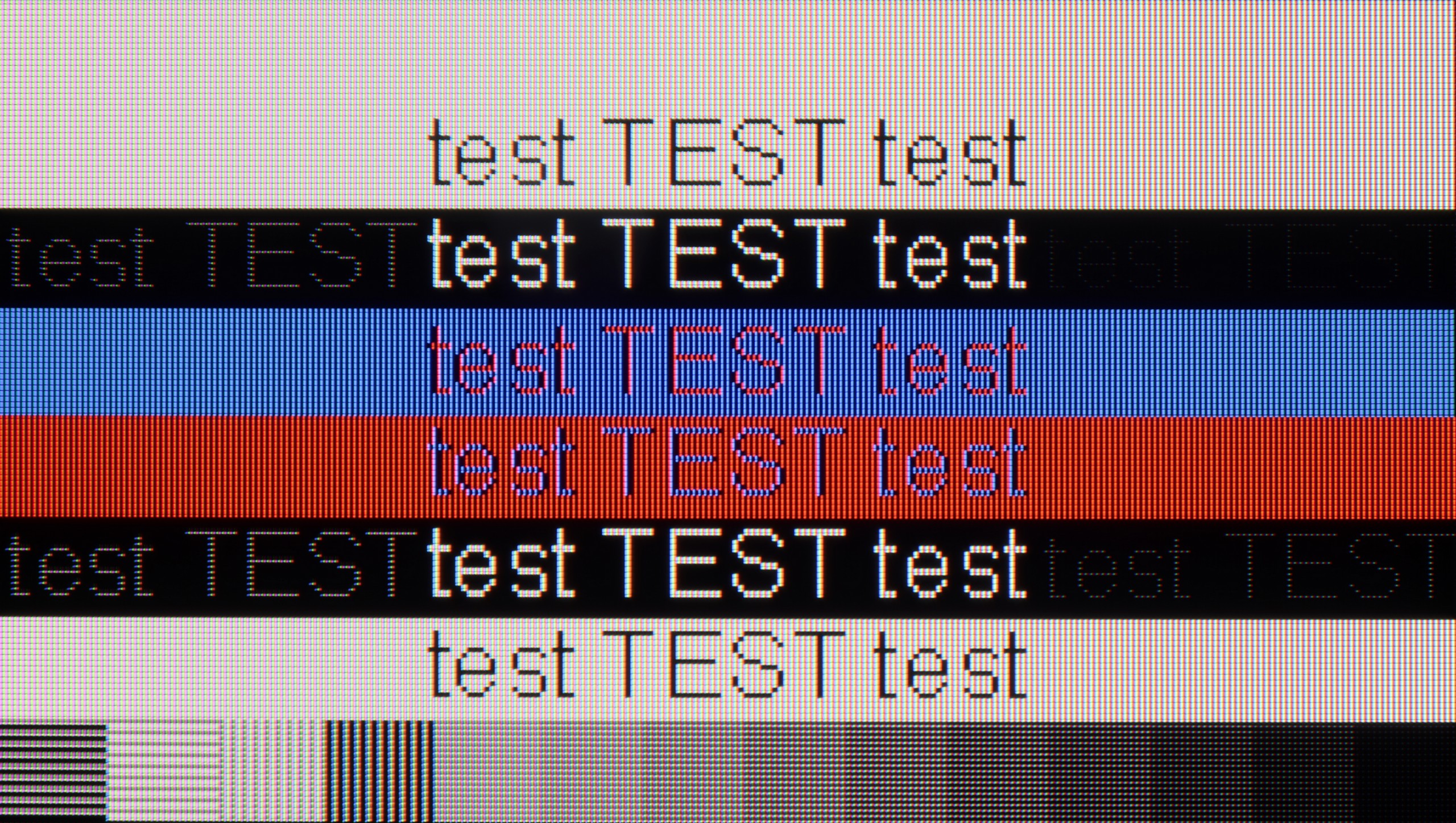
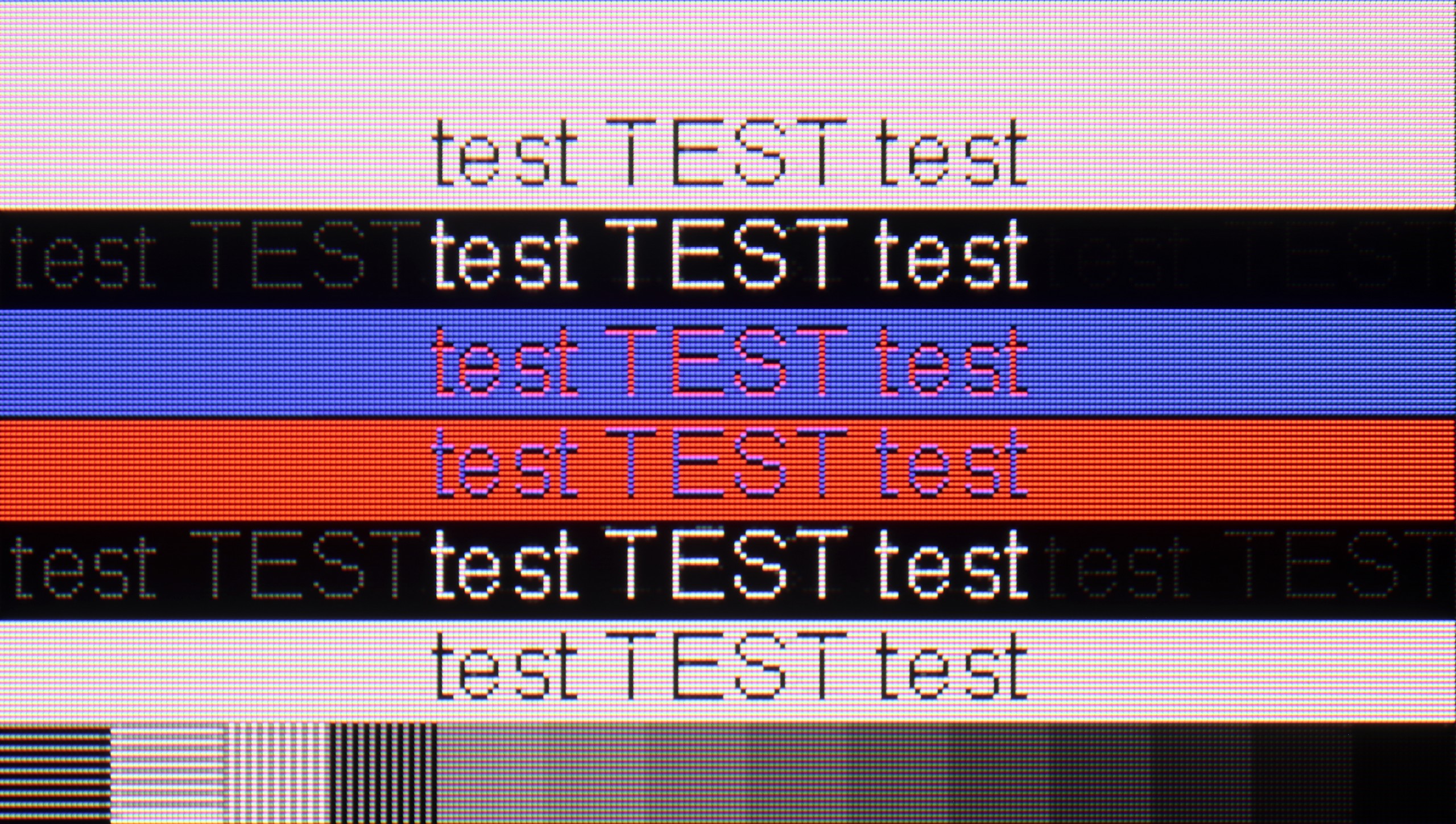
While playing on the Q8F isn't exactly the most attractive option—it's lacking modes with lower resolution and higher refresh rates, plus there are issues with VRR (G-Sync) and the panel is limited to 60 Hz—it performs excellently as a monitor for work. Font readability is at a very high level, so working with text or spreadsheets in Excel is a pure pleasure. In this regard, the Q8F could be a viable alternative to a large office monitor.
Cooperation with a PC is only partially satisfying. The television supports chroma 4:4:4, so at first glance, the fonts look quite decent. The problem arises when we take a closer look – under the microscope, it turns out that TCL has used an atypical subpixel arrangement in the V6C. Instead of the classic vertical layout, we have a horizontal arrangement here, which in practice causes various artifacts and unevenness in displaying letters. As a result, the fonts can appear jagged, and after prolonged use, the text can be straining on the eyes. Therefore, it’s hard to regard the V6C as a sensible substitute for a monitor – while it’s suitable for the occasional opening of a browser or watching content from a computer, it simply doesn't work as a primary screen for work. There’s also not much to say about gaming features, as they simply aren’t present.
Viewing angles
3.4/10
2.9/10
The viewing angles on the Q8F can be described as average, resulting from the applied VA matrix. Watching the television head-on, the picture looks very good, but just shifting slightly to the side causes it to start fading and losing contrast. Colours gradually lose their saturation, and black takes on a greyish hue. This is a typical limitation of this type of panel, and it’s hard to expect miracles here. Compared to IPS matrices, the difference is clear — while these have weaker contrast, they hold colour better at an angle. The Q8F is best suited for a classic setup, where viewers sit centrally in front of the screen. If you’re planning screenings with a larger group, with people spread wider across the living room, the effect may not be as satisfying.
The viewing angles on the V6C are the classic compromise we know from VA matrices. We gain solid black when watching straight on, but just a slight shift to the side clearly diminishes the image quality – colours fade and contrast drops. This is a typical limitation of this technology and probably won’t surprise anyone who has previously dealt with TVs. In practice, this means that the V6C works best in a “one sofa” setup – when watching straight in front of the screen, the black looks decent, but a larger group of viewers spread across the living room will quickly notice differences in the displayed image.
Daytime performance
5.6/10
3.6/10
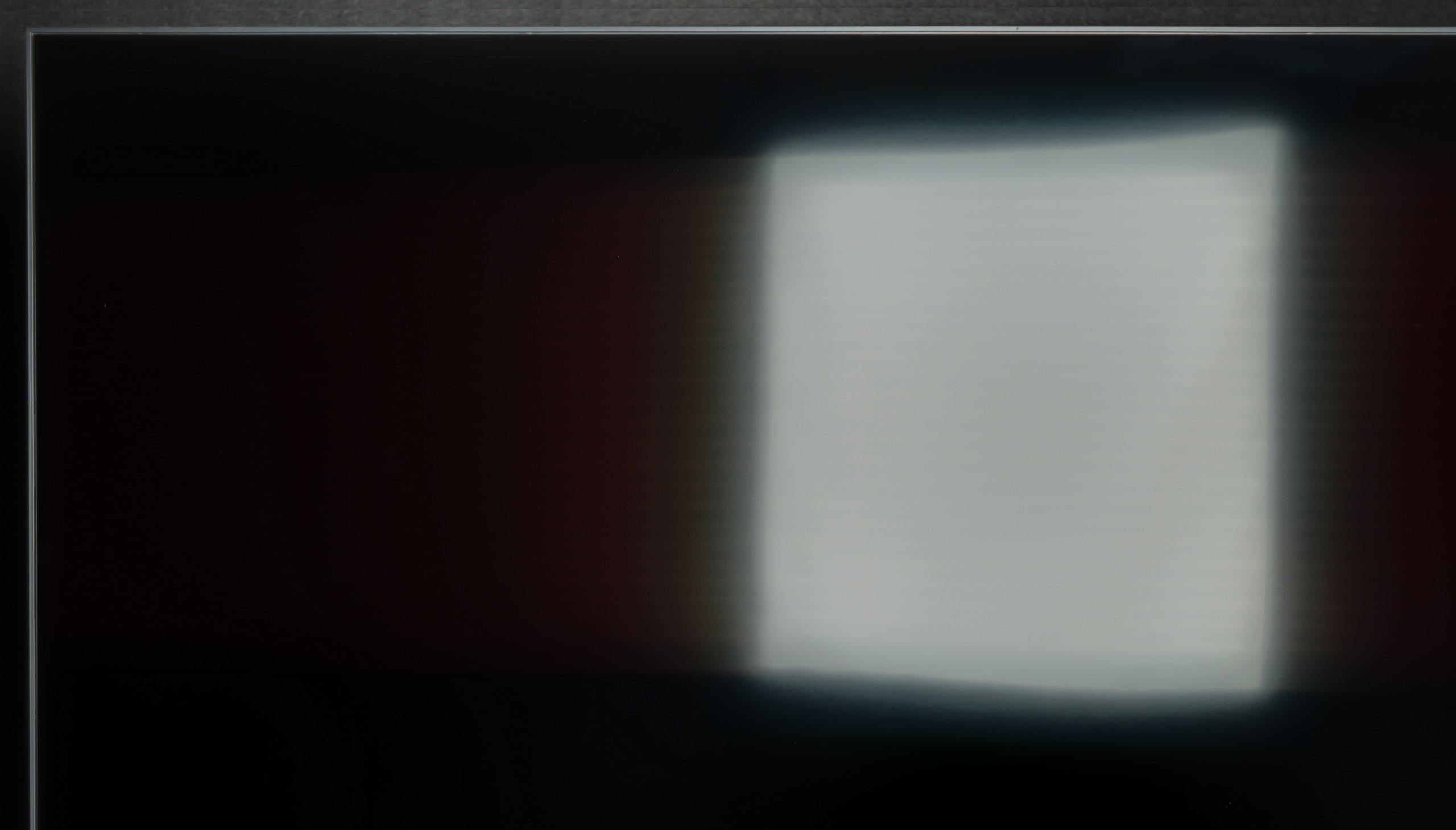
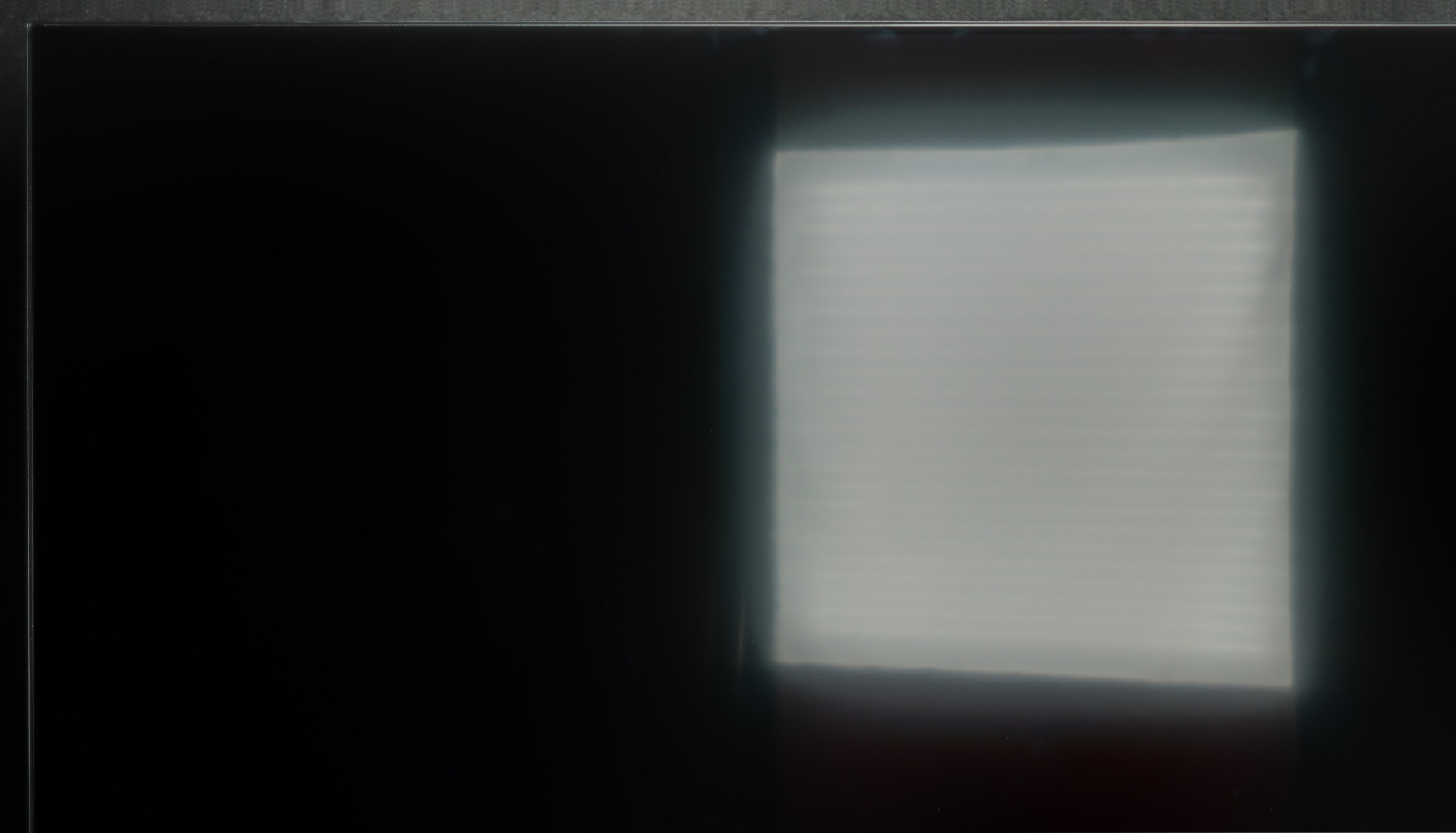

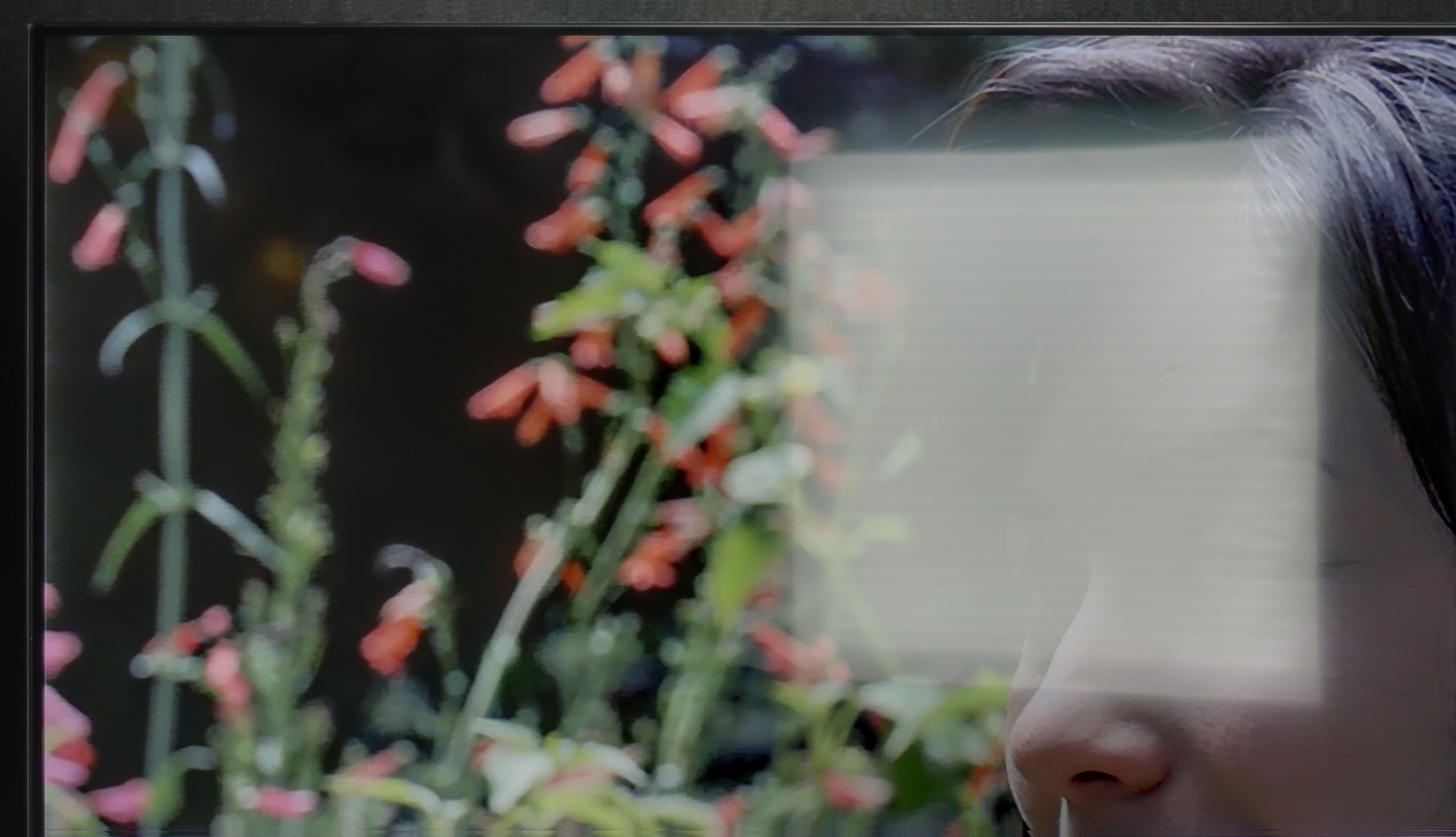
Panel brightness
Average luminance SDR
TCL V6C: 210 cd/m2
Samsung Q8F: 430 cd/m2
The Q8F performs quite well during the day. Its brightness hovers around 450 nits, which proves to be a sufficient level for moderately bright living rooms. It's not a TV that will win a battle against sunlight streaming directly through the window, but in typical home conditions, the picture remains clear and appealing. A big plus is the satin finish of the panel, which effectively reduces light reflections and helps maintain colour saturation even when the room is bright. This makes watching series during the day or evening sports broadcasts with the lights on no problem. The Q8F doesn't aspire to be a cinema TV in full sunlight, but as a daily screen in normal home conditions, it performs really well.
The V6C’s performance during the day isn’t one of its strong points. It’s a relatively dim television, which is why it simply struggles in heavily lit rooms. The satin finish on the panel somewhat dampens reflections and does indeed reduce troublesome glares, but it’s not enough to speak of full viewing comfort. When a lot of natural light floods into the room, the screen isn’t able to “break through” it, causing the image to appear dull and hard to read. The V6C is definitely a piece of equipment that feels much better suited for evening viewing than for sunny afternoons.
Panel details
Subpixel Structure:
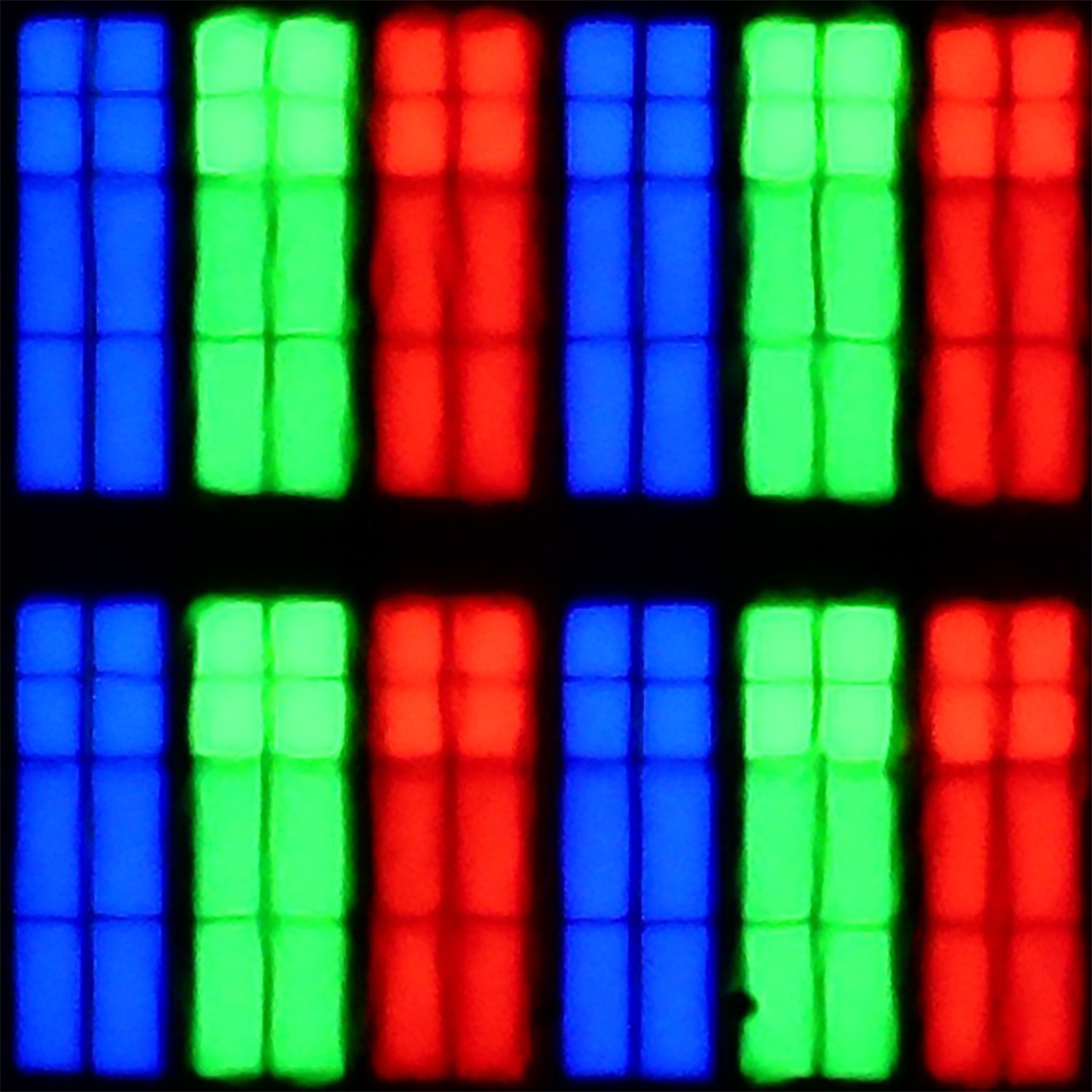
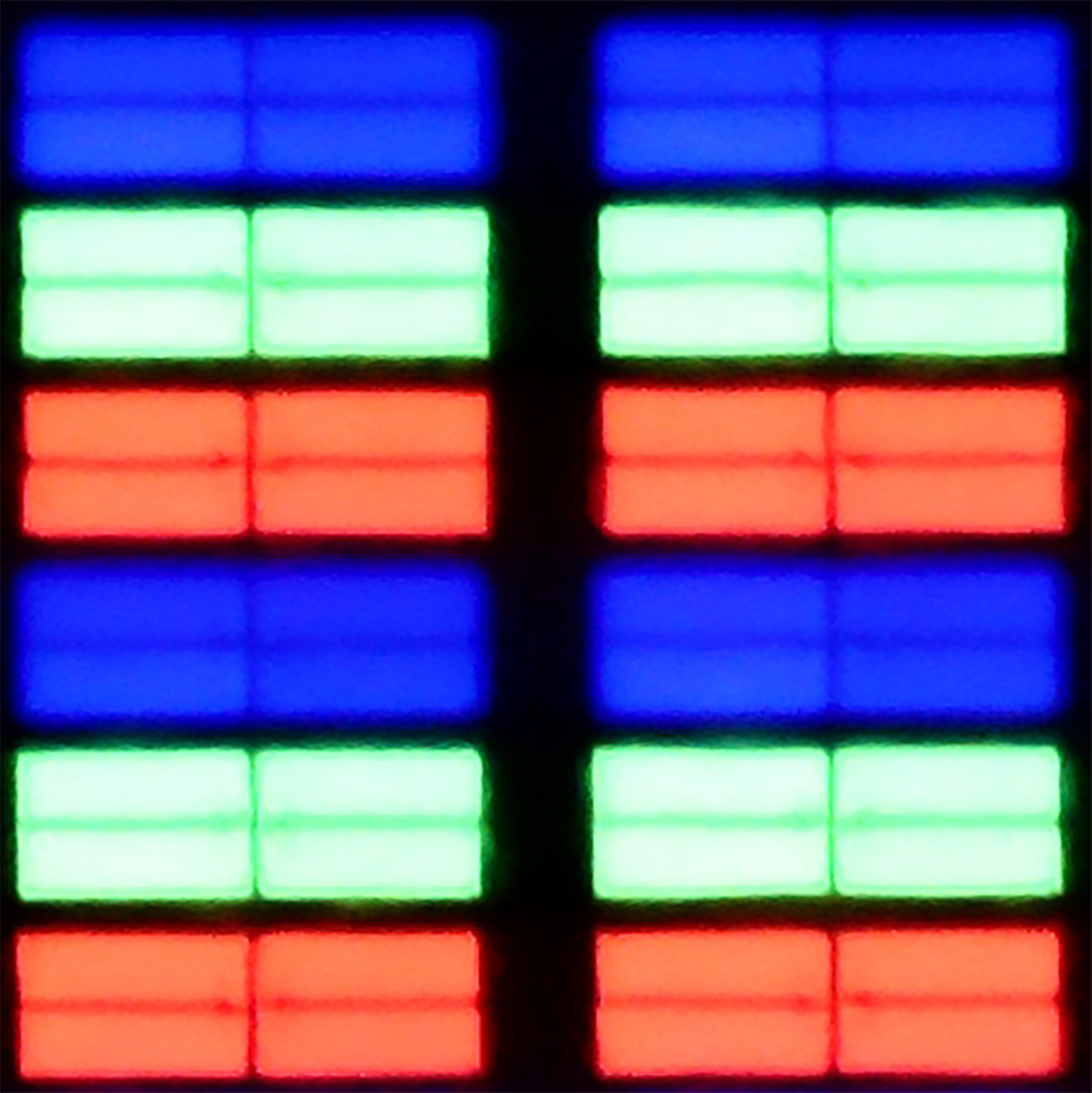
Panel uniformity and thermal imaging:


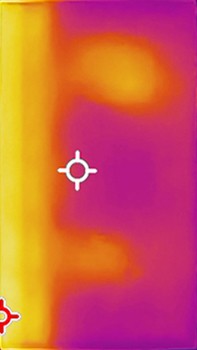
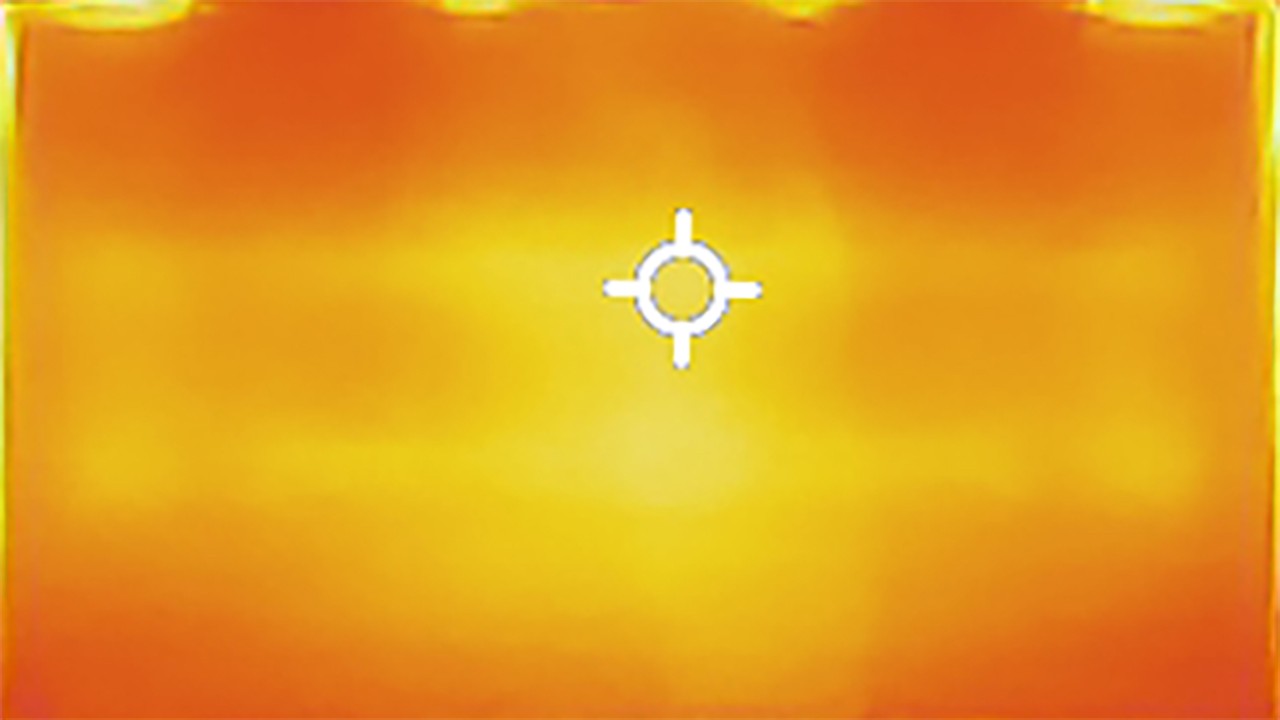
Samsung Q8F
TCL V6C
TV features
7.3/10
7.3/10
- HDMI inputs3 x HDMI 2.0, 0 x HDMI 2.13 x HDMI 2.0, 0 x HDMI 2.1
- OutputsToslink (Optical audio), eARC (HDMI), ARC (HDMI)Toslink (Optical audio), eARC (HDMI), ARC (HDMI)
- Network InterfacesWi-Fi 2.4GHz, Wi-Fi 5GHz, Ethernet (LAN) 100MbpsWi-Fi 2.4GHz, Wi-Fi 5GHz, Ethernet (LAN) 100Mbps
- TV receptionDVB-T, DVB-T2, DVB-S, DVB-S2, DVB-CDVB-T, DVB-T2, DVB-S, DVB-S2, DVB-C
Classic features:
- Recording to USB (terrestrial TV)
- Recording programming
- Picture in Picture (PiP)
- RF remote control (no need to aim at the screen)
- Backlit remote control
- Teletext
- Audio only mode
- Bluetooth headphones support
- Simultaneous Bluetooth headphones & TV audio
Smart features:
- AirPlay
- Screen mirroring (Windows Miracast)
- Voice search
- Voice search in native language
- Ability to connect a keyboard and mouse
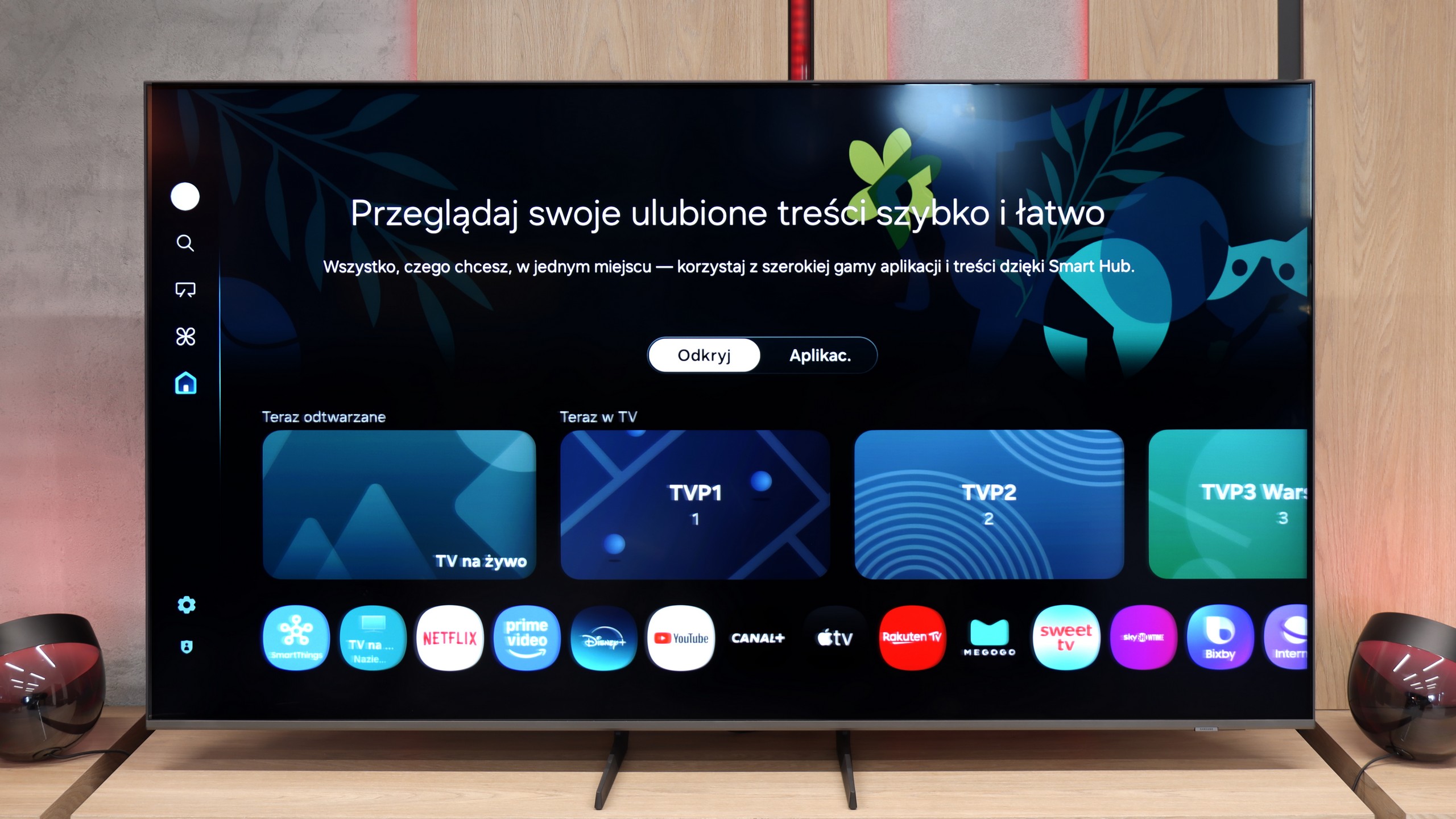
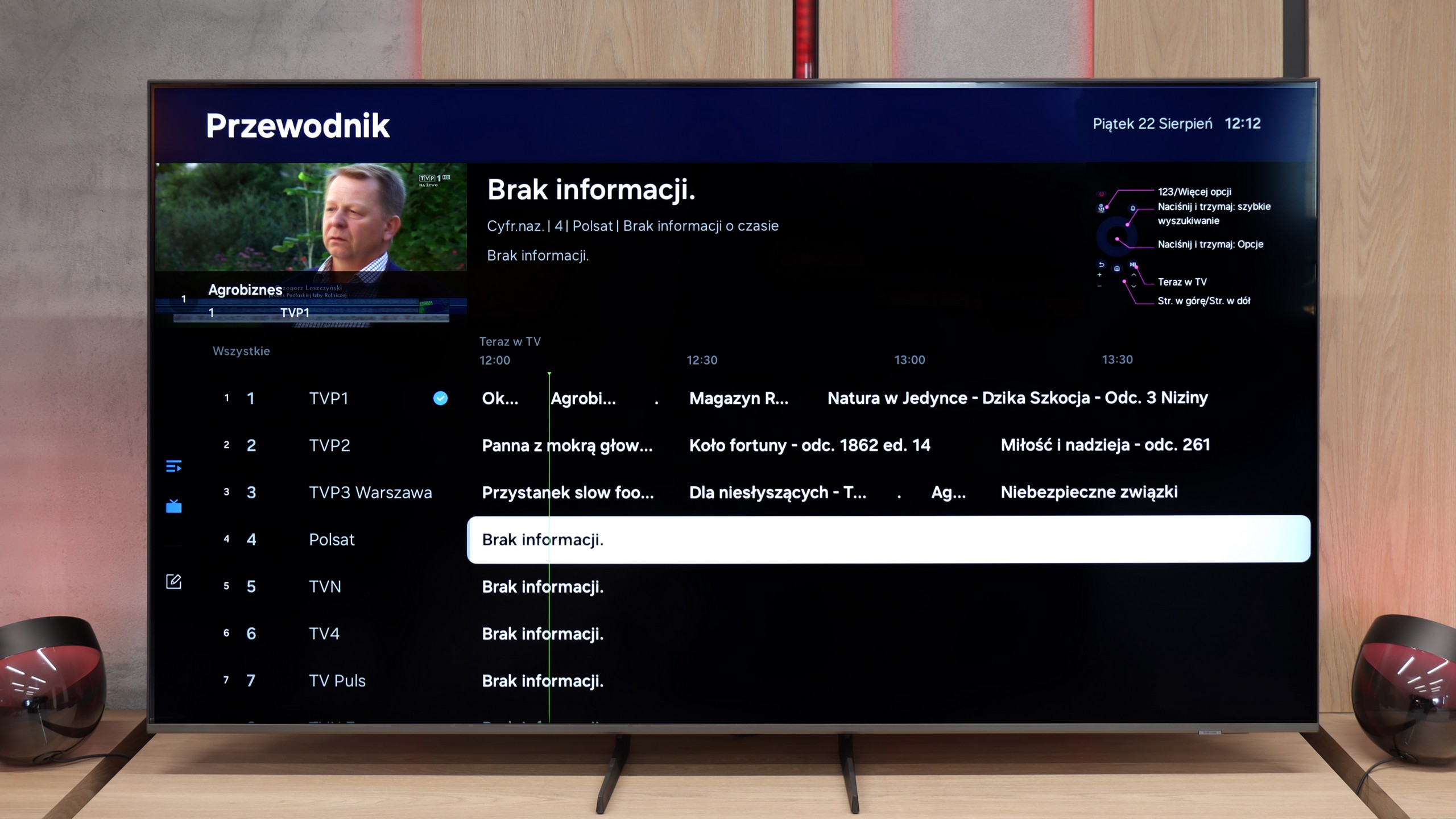
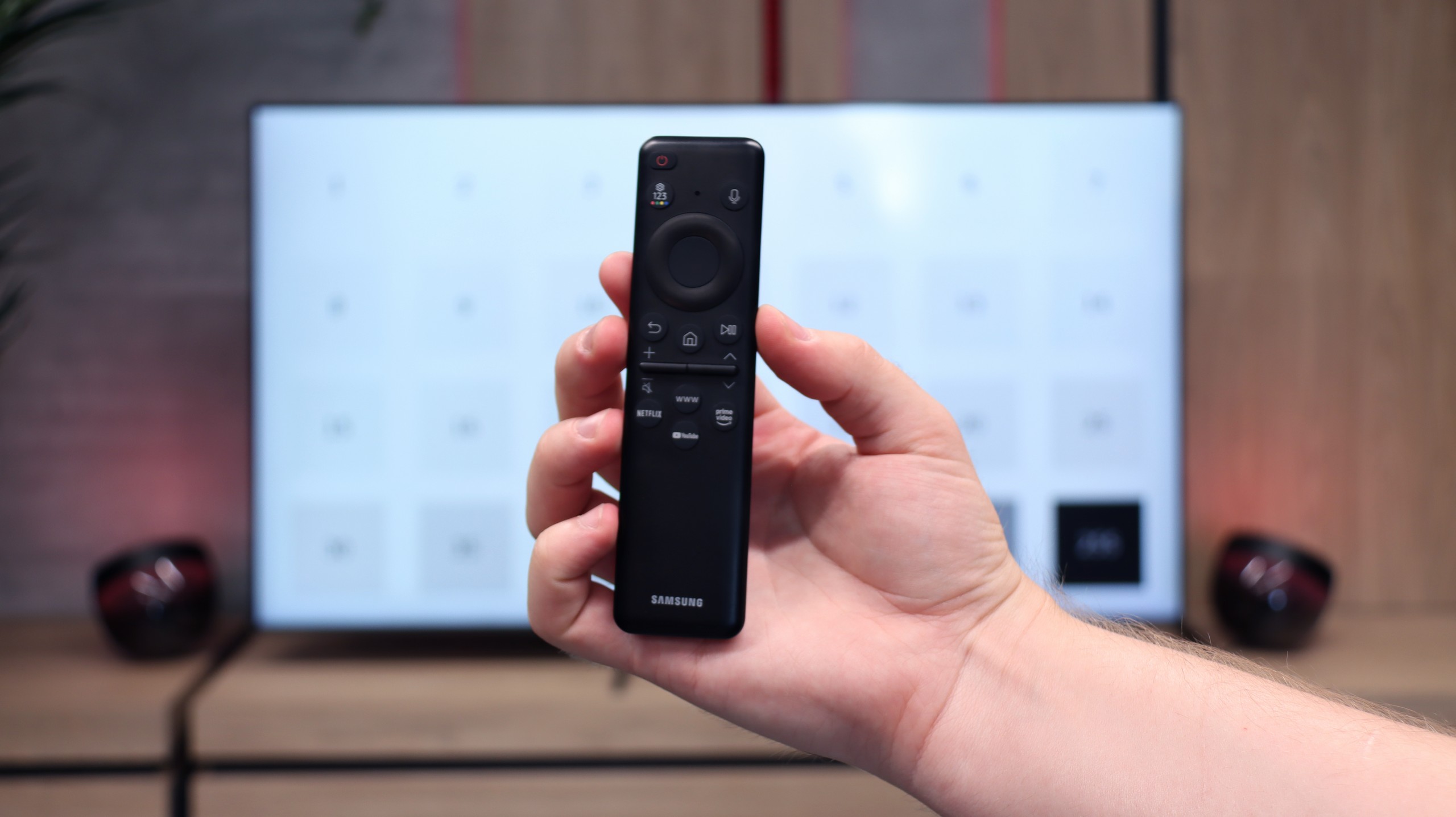
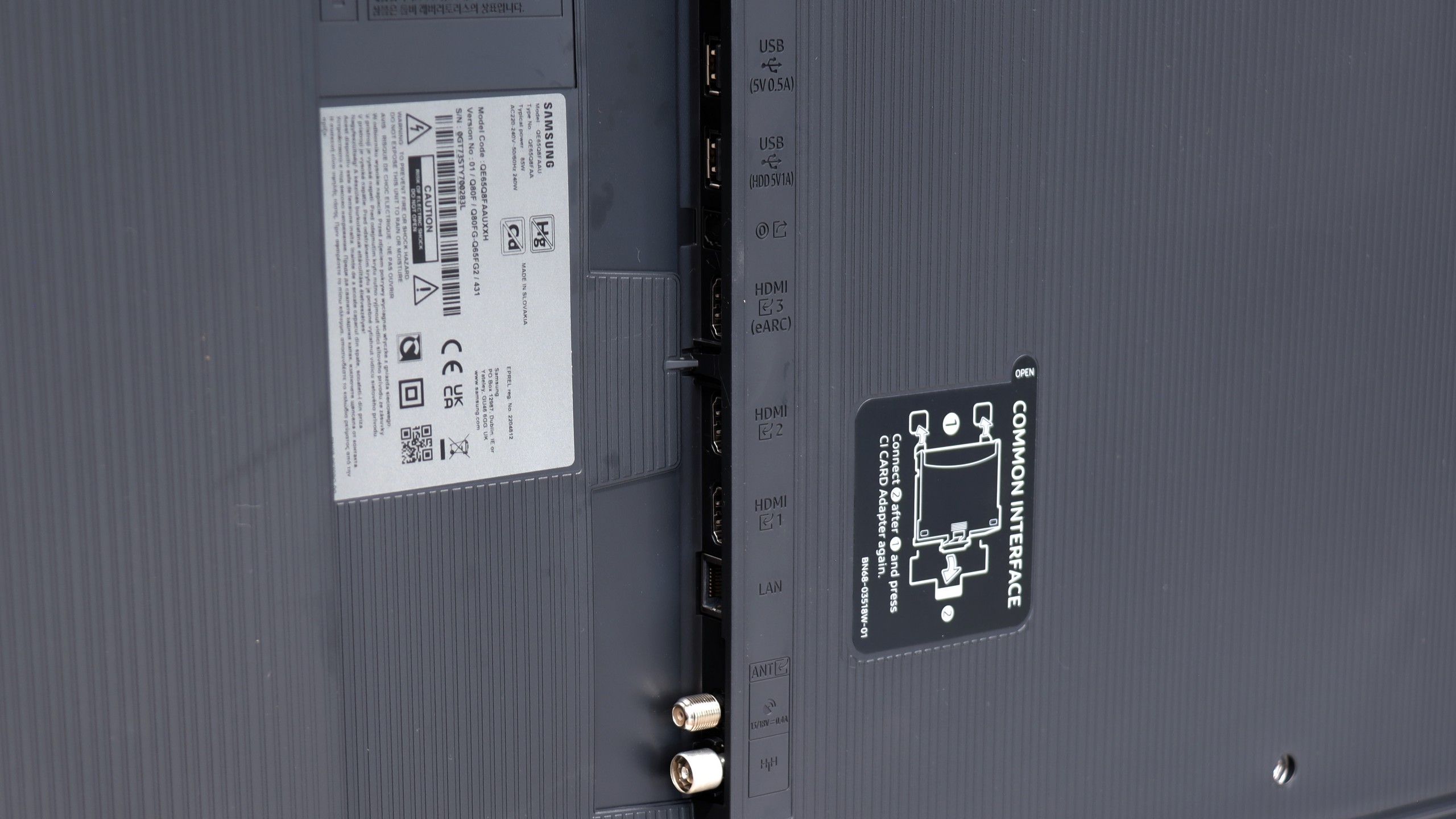
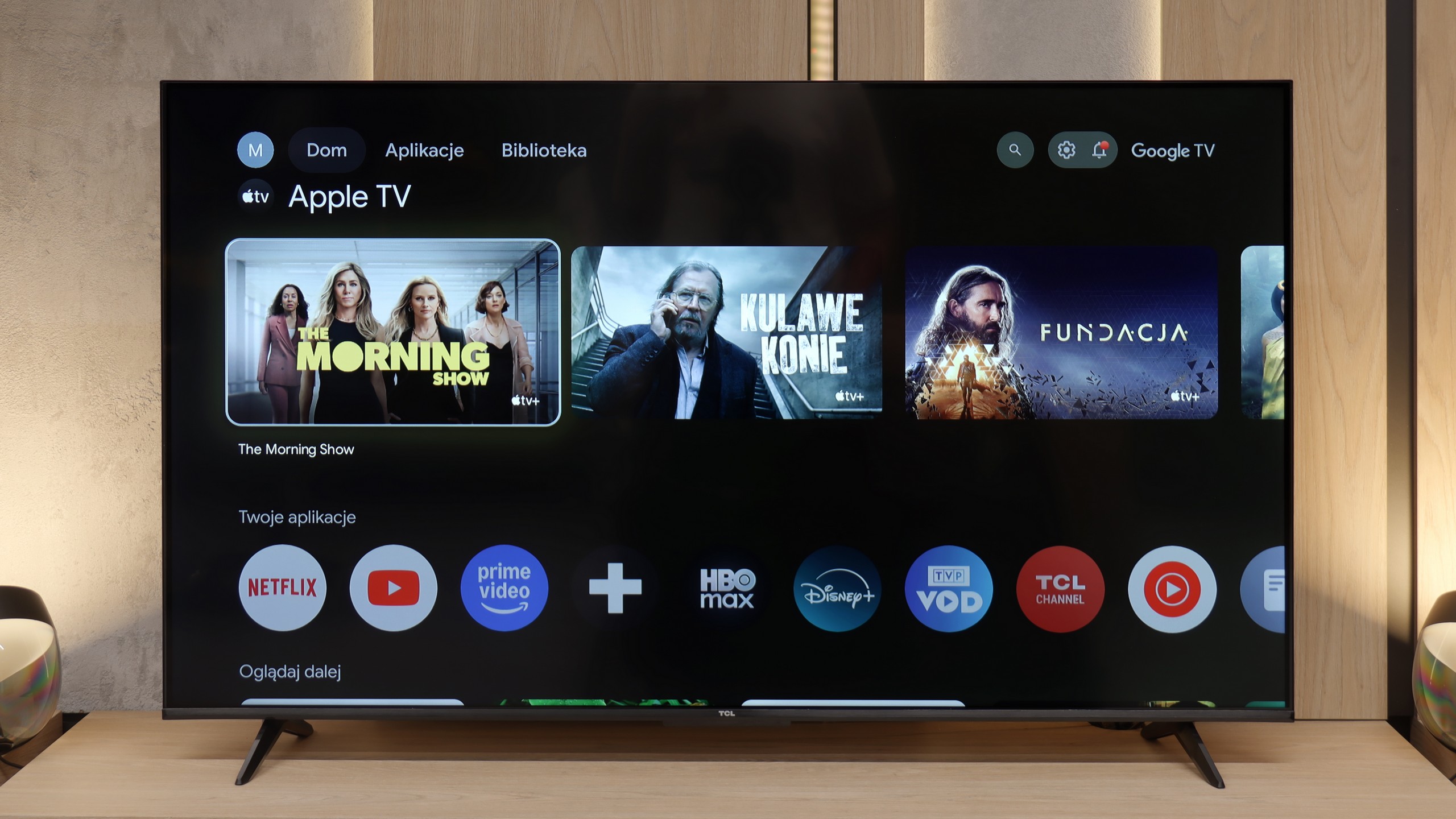
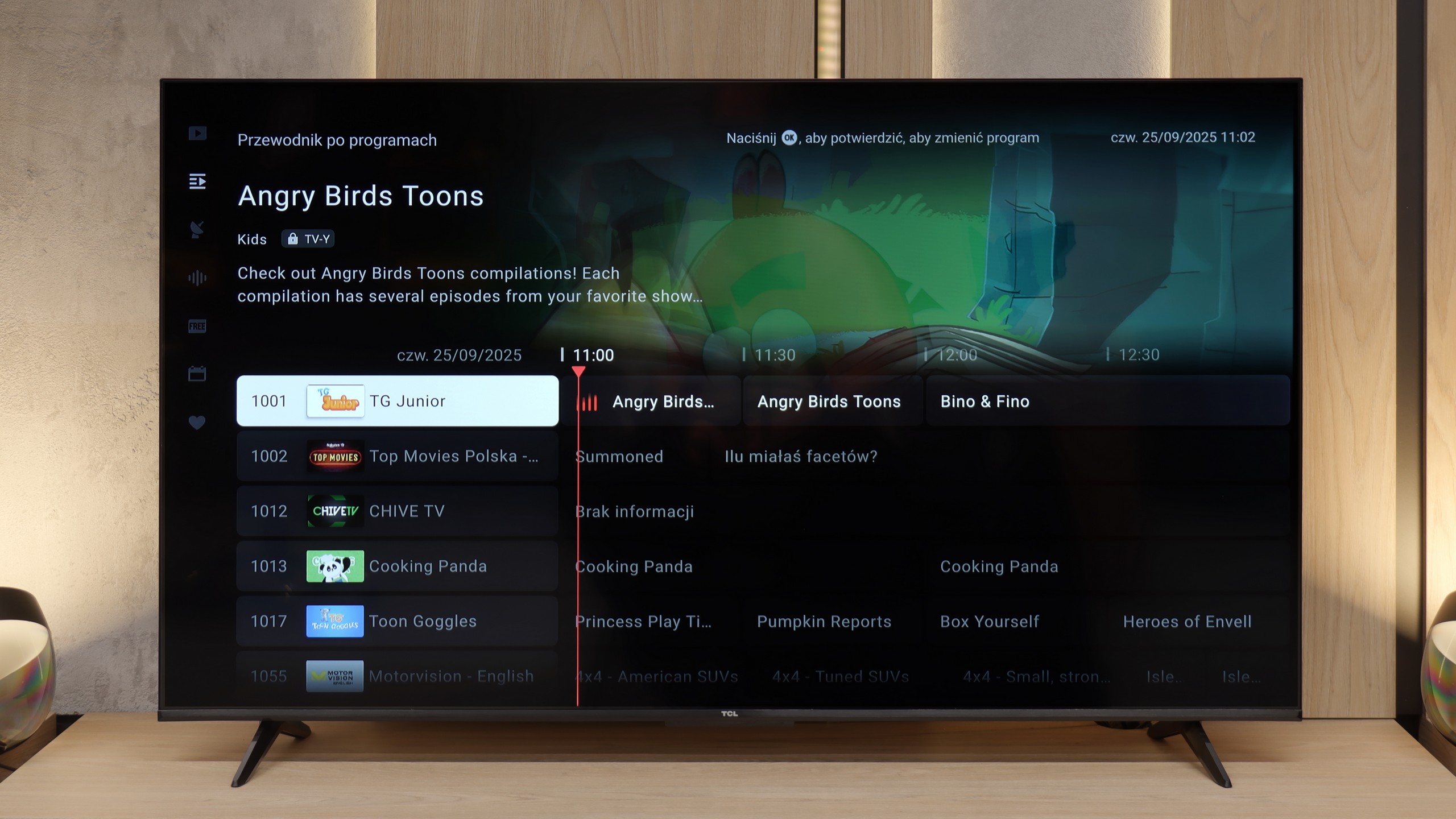
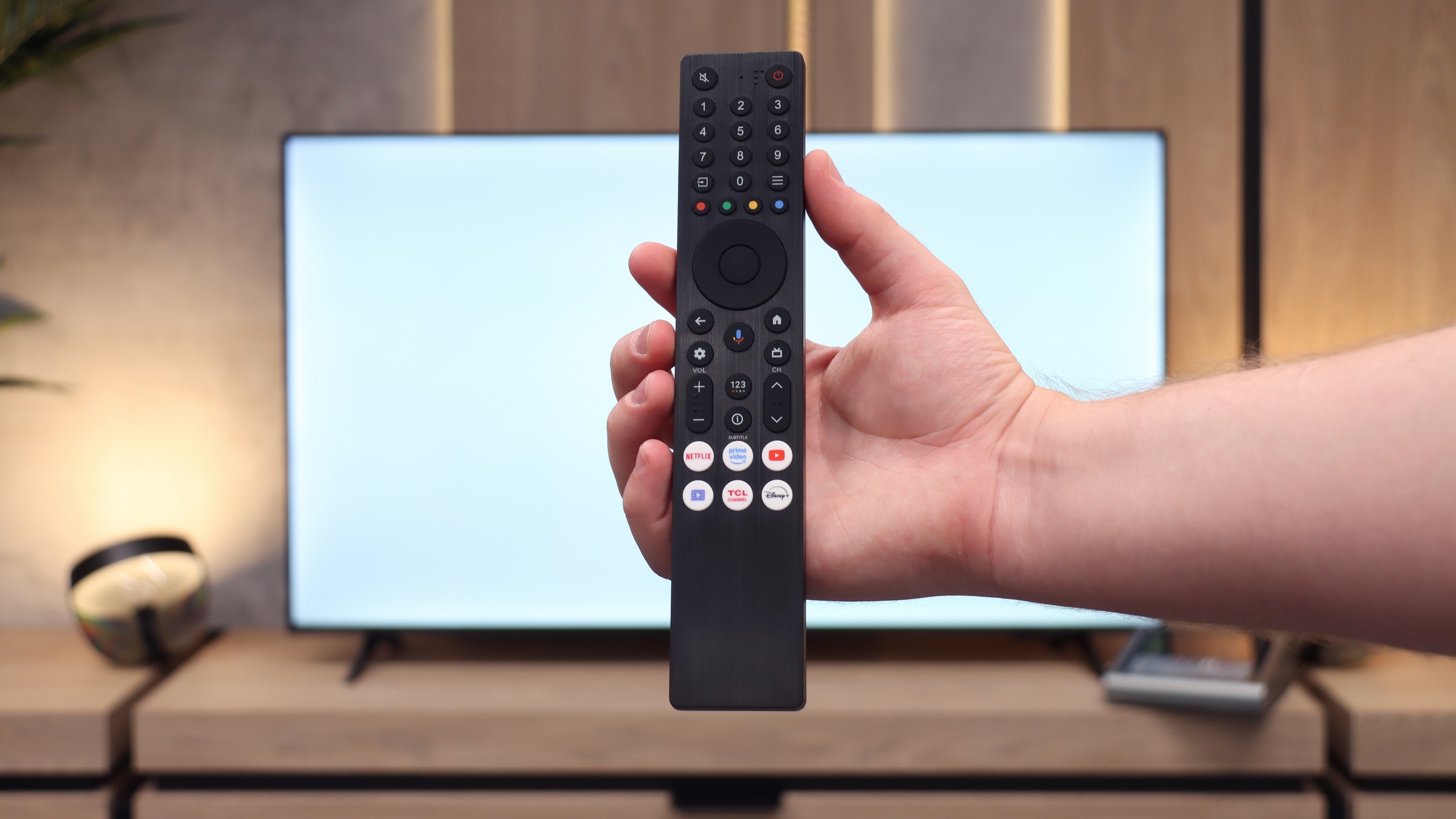
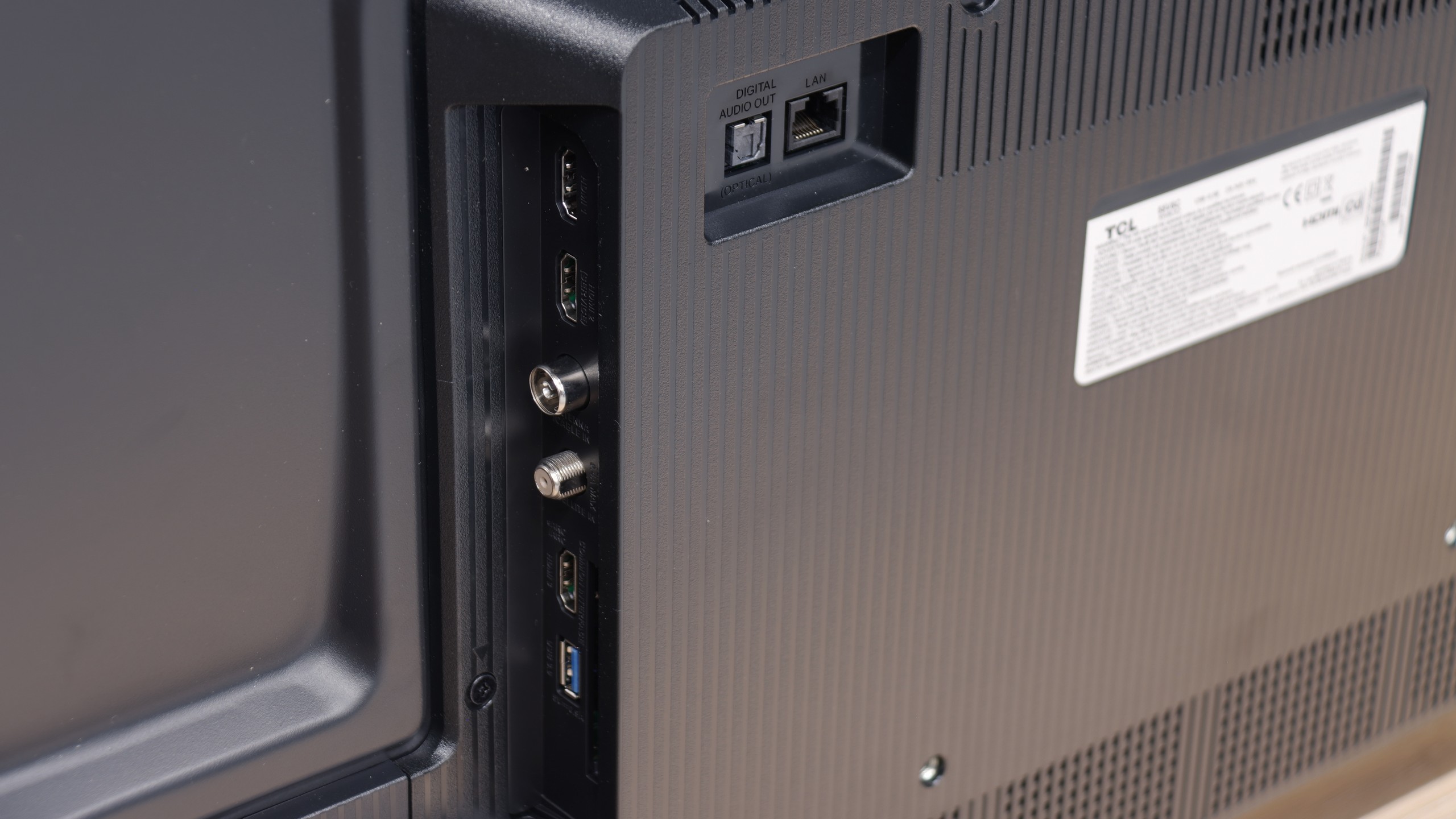
SmartTV Features: Tizen
In terms of smart features, the Q8F is right up there with what Samsung has made us accustomed to. It comes with the Tizen system – fast, intuitive, and well integrated with other devices. AirPlay, screen mirroring, and simple voice commands work seamlessly, so the basics are ticked off perfectly. Added to this is SmartThings, an app that turns the TV into the hub of a home ecosystem. You can connect a washing machine, vacuum cleaner, light bulbs, or speakers and control everything from one place, including the TV. There are also plenty of apps in Tizen for watching movies and series – Netflix, YouTube, Disney+, and Prime Video are all readily available. However, it should be noted that Tizen is a closed system, so if someone is hoping to install less popular programs, they might be disappointed.
Traditional Television
Traditional television falls short. The Q8F simply serves as a screen here – it will display the picture, but additional features like USB recording or PiP mode are absent. The remote is small and very minimalist. It looks modern and can be charged via solar batteries on the back cover or through USB-C, but it's worth noting that it might not suit everyone – particularly older users may miss traditional buttons. However, it's fair to say that Samsung has been consistently steering its TVs (and competitors who are copying some of their ideas) towards the smart home direction rather than towards devices "for grandma and grandpa". Given the enormous popularity of the brand, one can assume that most users, even the older ones, have already gotten used to the fact that the era of remotes with a whole range of rubber buttons is slowly coming to an end.
SmartTV: GoogleTV
The biggest asset of the V6C is the Google TV operating system. It's an advanced platform that provides access to a vast array of applications – from YouTube, Netflix, Disney+ and HBO Max, to less popular programs that can be easily downloaded from the Google store. Additionally, there are useful features such as AirPlay, screen mirroring, and voice search. However, it’s important to note that Google TV is not the lightest system. In the case of the V6C, which is a budget television, there are sometimes noticeable lags and slower interface responses. This doesn't ruin everyday use, but it can be felt, especially compared to more expensive TCL models or competitors.
Classic Features
The V6C also doesn’t forget about solutions for those who use television in a traditional way. The package includes a classic remote with a large number of buttons, including a full numeric keypad. This is practical for people watching terrestrial or cable television. The television also offers teletext and a clear interface for managing channels. Notably, the Bluetooth support is hassle-free – we can easily pair headphones or a speaker. Therefore, the V6C performs solidly as an everyday television, though one must remember certain limitations. There’s no USB recording or picture-in-picture (PiP) mode, which are features that mainly older users might need. (Though not only 😉).
Playing files from USB
9.1/10
8.7/10
Supported photo formats:
Maximum photo resolution:
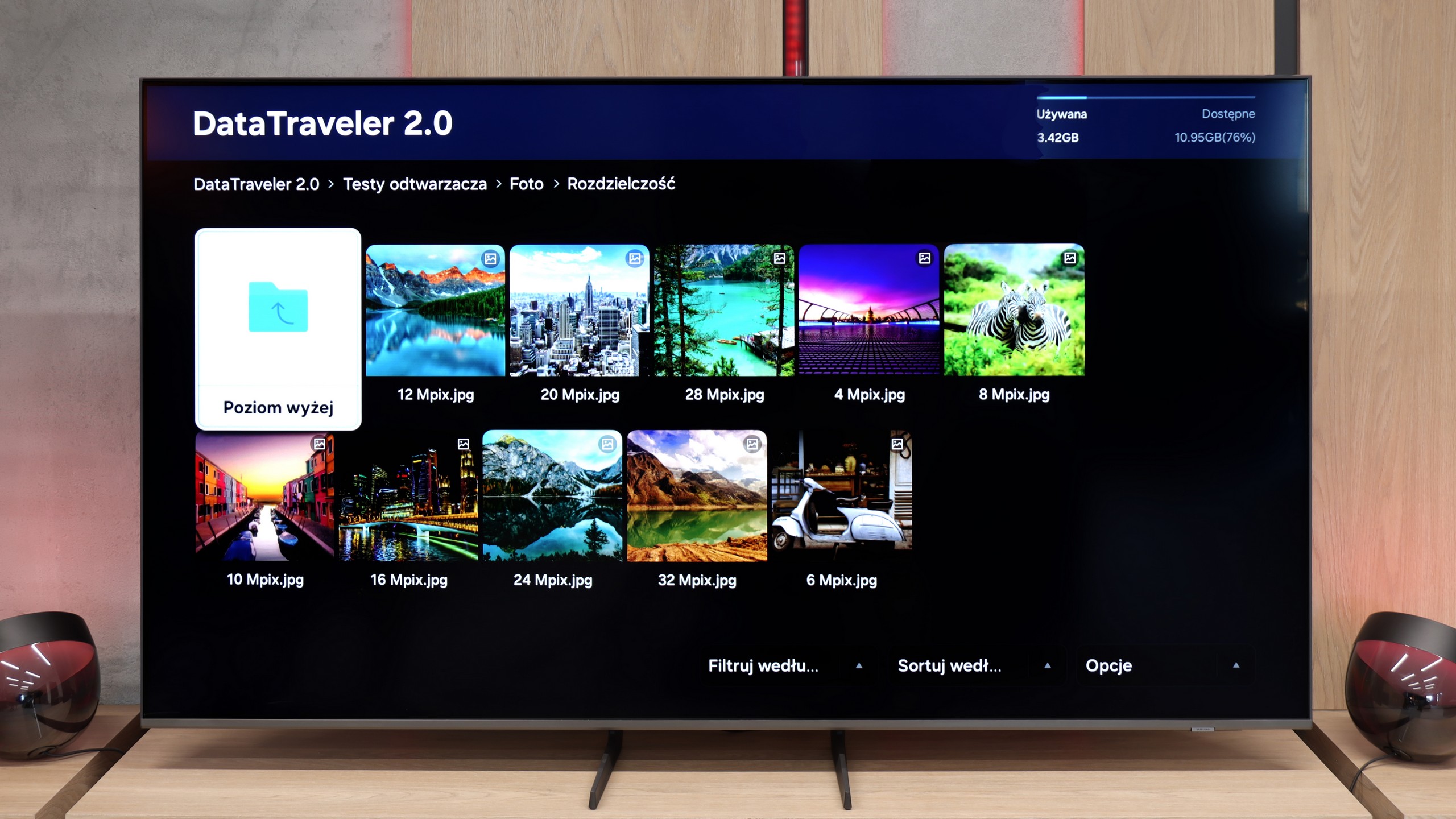
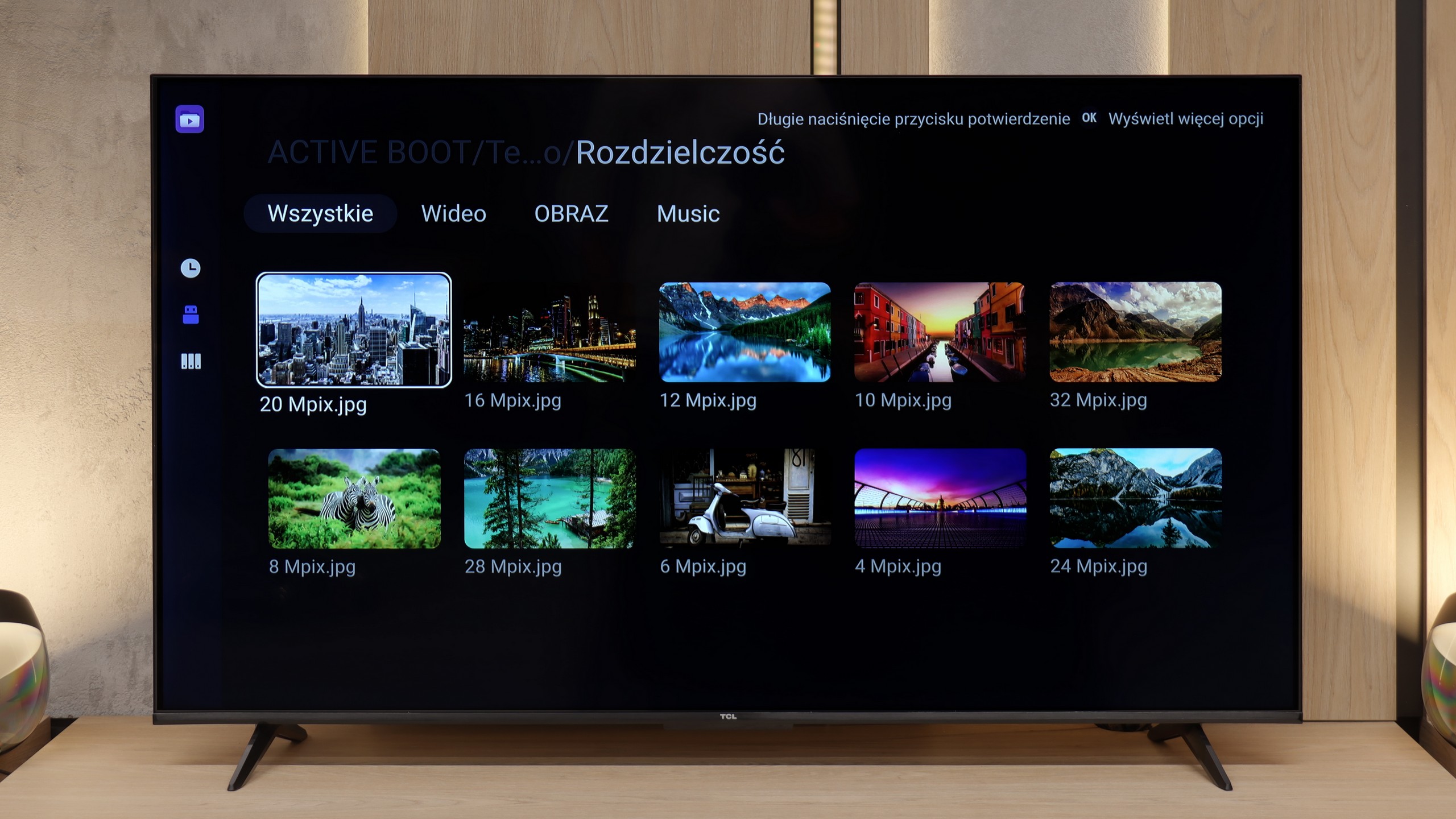
Samsung Q8F handles playback of files from USB quite efficiently. It supports almost all popular video formats as well as photos, so you can easily load a holiday movie or a family album. There are occasional exceptions with less popular photo formats, but the essential JPEG works flawlessly, which will be crucial for most users. It's a shame that Tizen doesn't allow the installation of alternative players, such as VLC. Then even less popular formats wouldn't pose any problem.
Playing files from USB on the V6C is quite decent. The built-in player handles most popular video and audio formats well, and during tests, we didn't encounter significant issues with typical files. The biggest problem arose with very high-resolution photos - above 20 Mpix, the TV often refused to cooperate. We also noticed some minor functionality gaps regarding video playback. The video player lacks the option to change font colours, which worked without issues in other TCL models. Fortunately, these are inconveniences that are easy to get around. Thanks to Google TV, you can install external applications like VLC or KODI, which solve most problems and offer much broader file handling capabilities.
Apps
8.7/10
9.6/10














































Sound
6/10
5.8/10
- Maximum volume84dB83dB
- Dolby Digital Plus 7.1
- Dolby True HD 7.1
- Dolby Atmos in Dolby Digital Plus (JOC)
- Dolby Atmos in Dolby True HD
- DTS:X in DTS-HD MA
- DTS-HD Master Audio
The sound on the Q8F can be described as acceptable. You can hear a slightly defined bass, but it's really minimal – the slim design of the television simply doesn't allow the pair of 2 × 10 W speakers to spread their wings. This is a typical scenario for most televisions: if someone cares about truly cinematic experiences, it's worth considering a soundbar. Samsung has a really wide range in this category across different budgets, so it's easy to find something suitable. The television itself is fine for watching traditional TV and series occasionally, but you wouldn't expect much in terms of audio excitement.
The sound on the V6C doesn't stand out from the competition in the same price range. The audio is quite flat, and there's simply a lack of bass. Fortunately, the television can play loud – measured at 83 decibels, it's a pretty decent result, and importantly, even at maximum volume, there is no unpleasant crackling that often plagues cheaper models. However, it's worth noting the support for advanced surround sound formats rather than just the quality of the built-in audio. The V6C handles Dolby Atmos and DTS:X, so connecting a soundbar or another external audio system won't be an issue and will allow full use of these codecs. This is a good sign for those planning to expand their setup with additional audio equipment.
Acoustic Measurements
84dBC (Max)
75dBC
83dBC (Max)
75dBC
